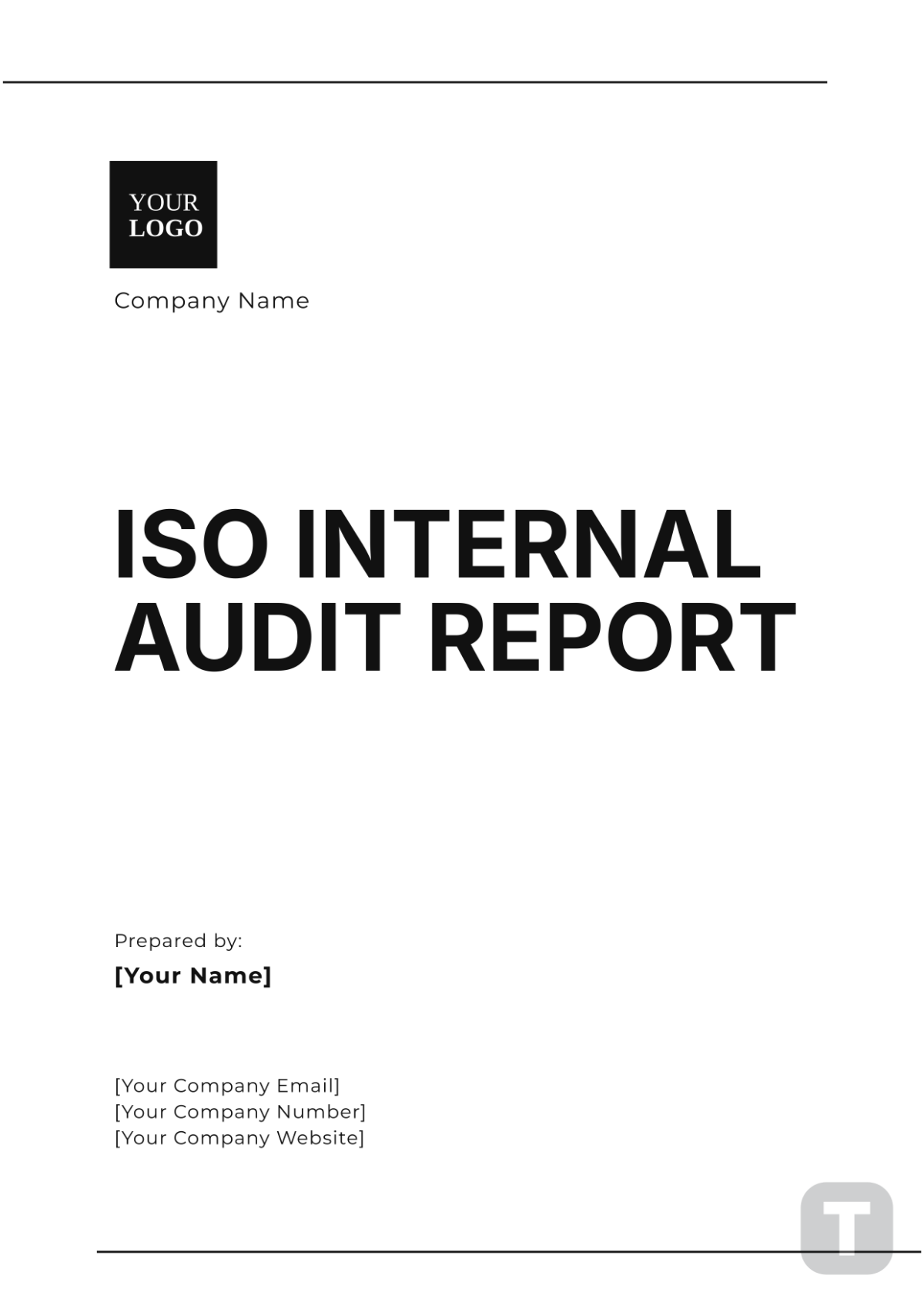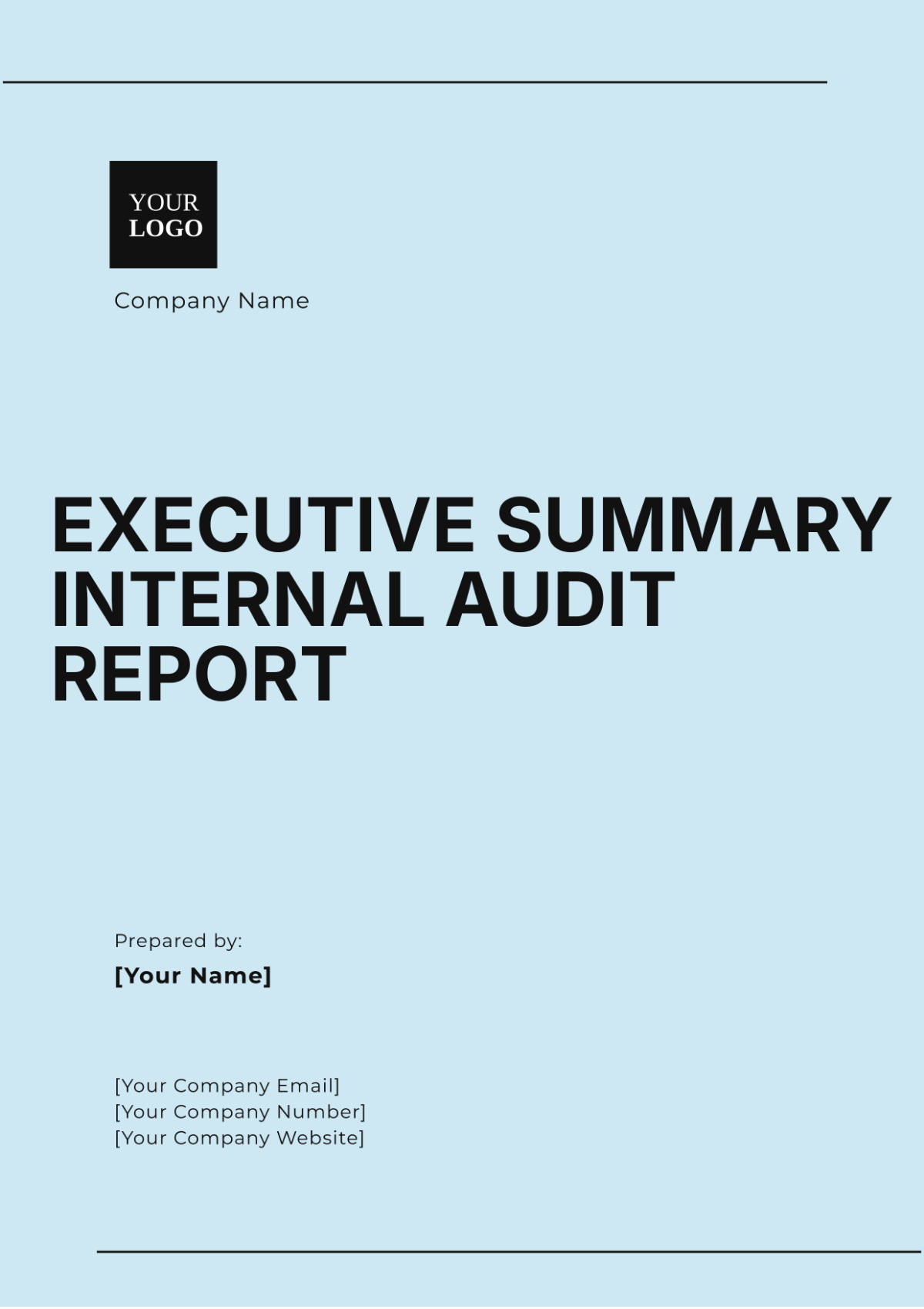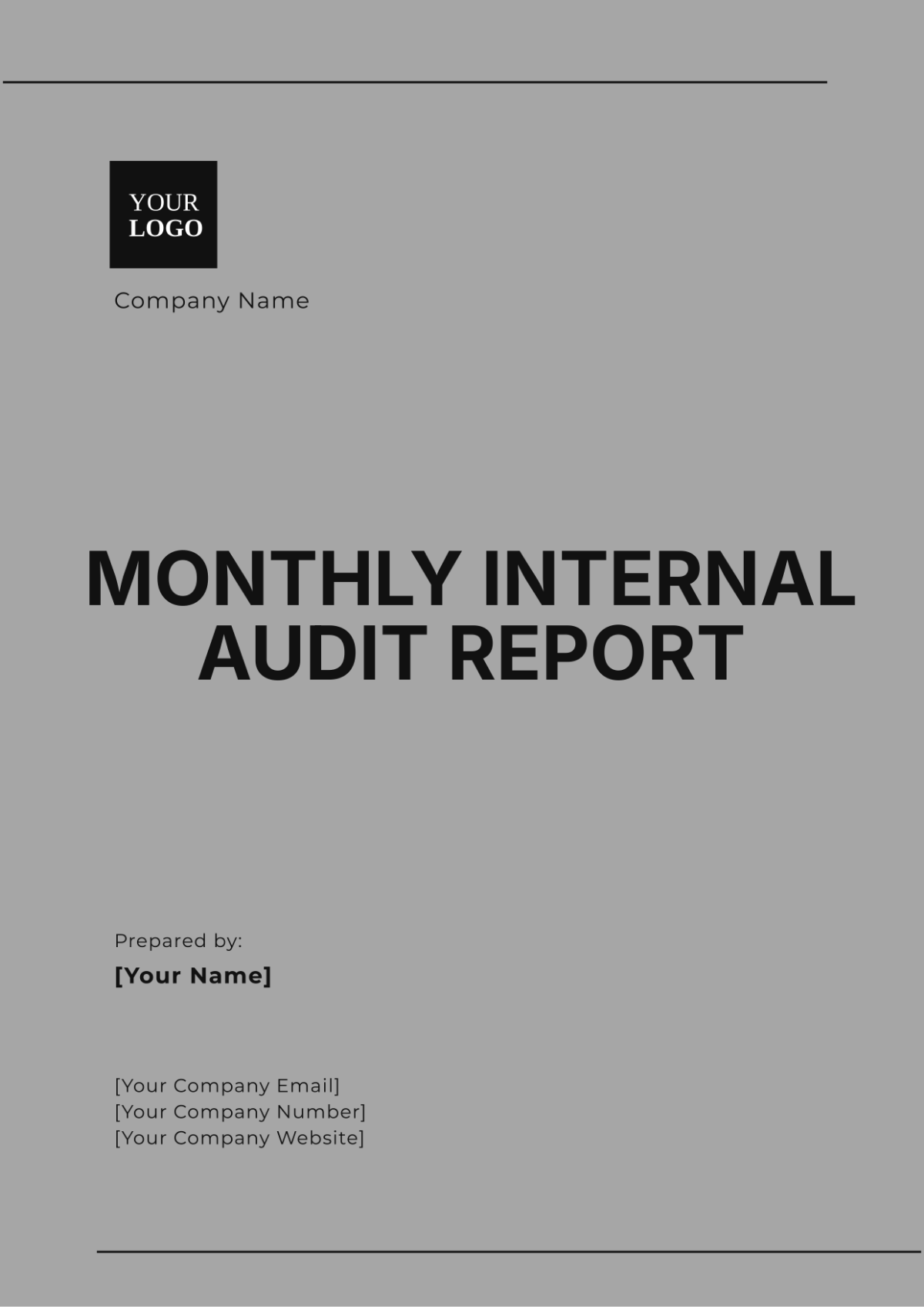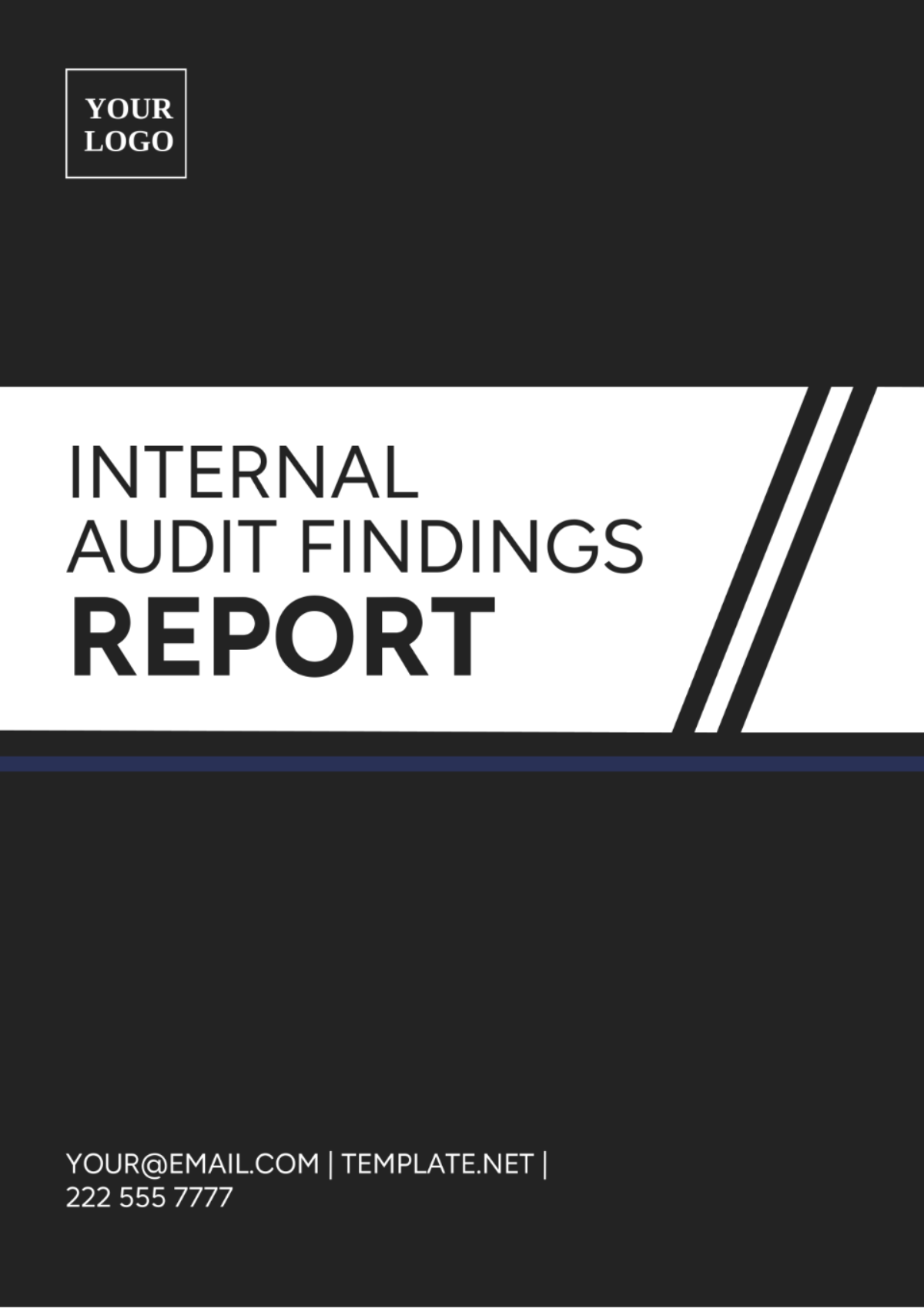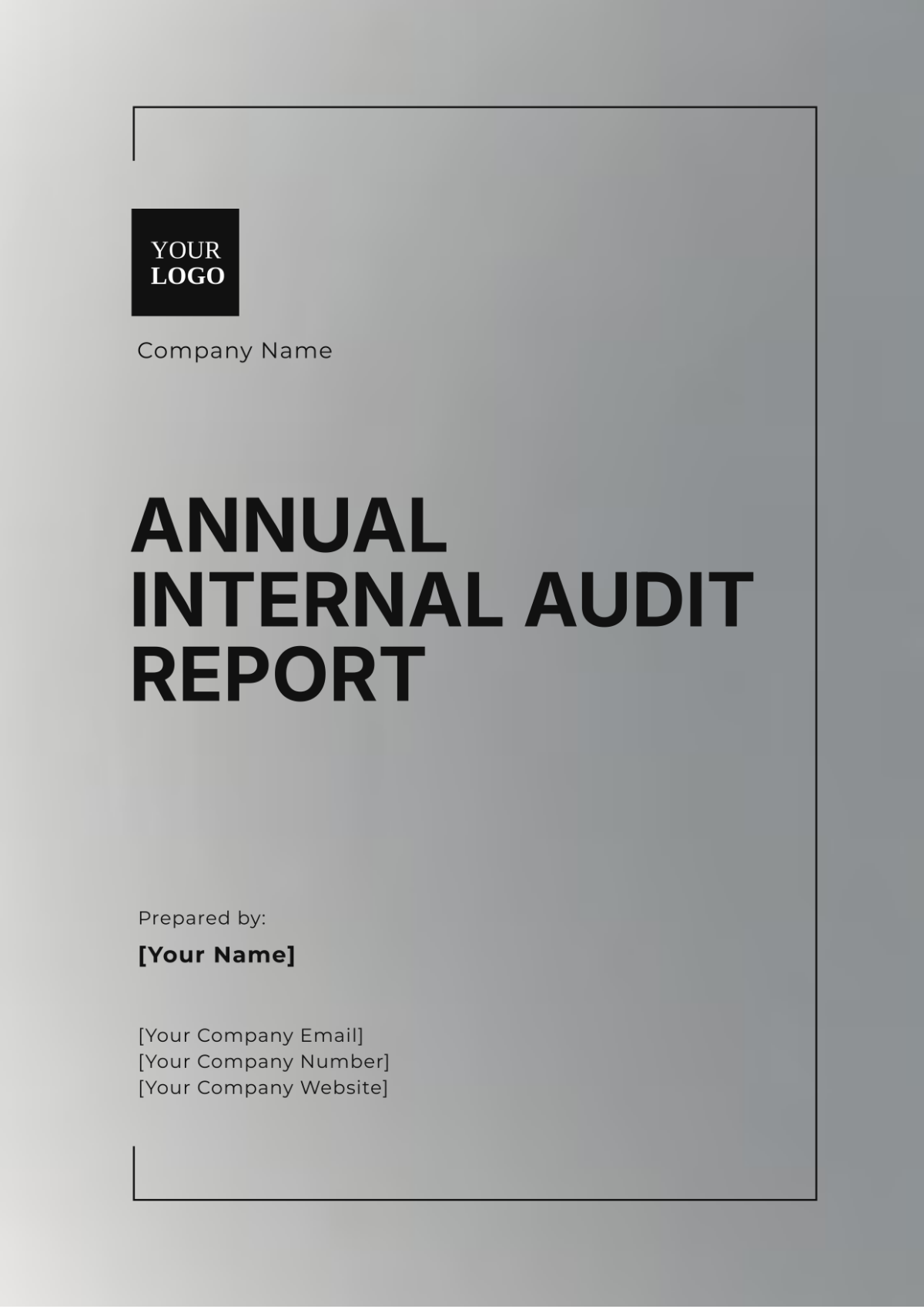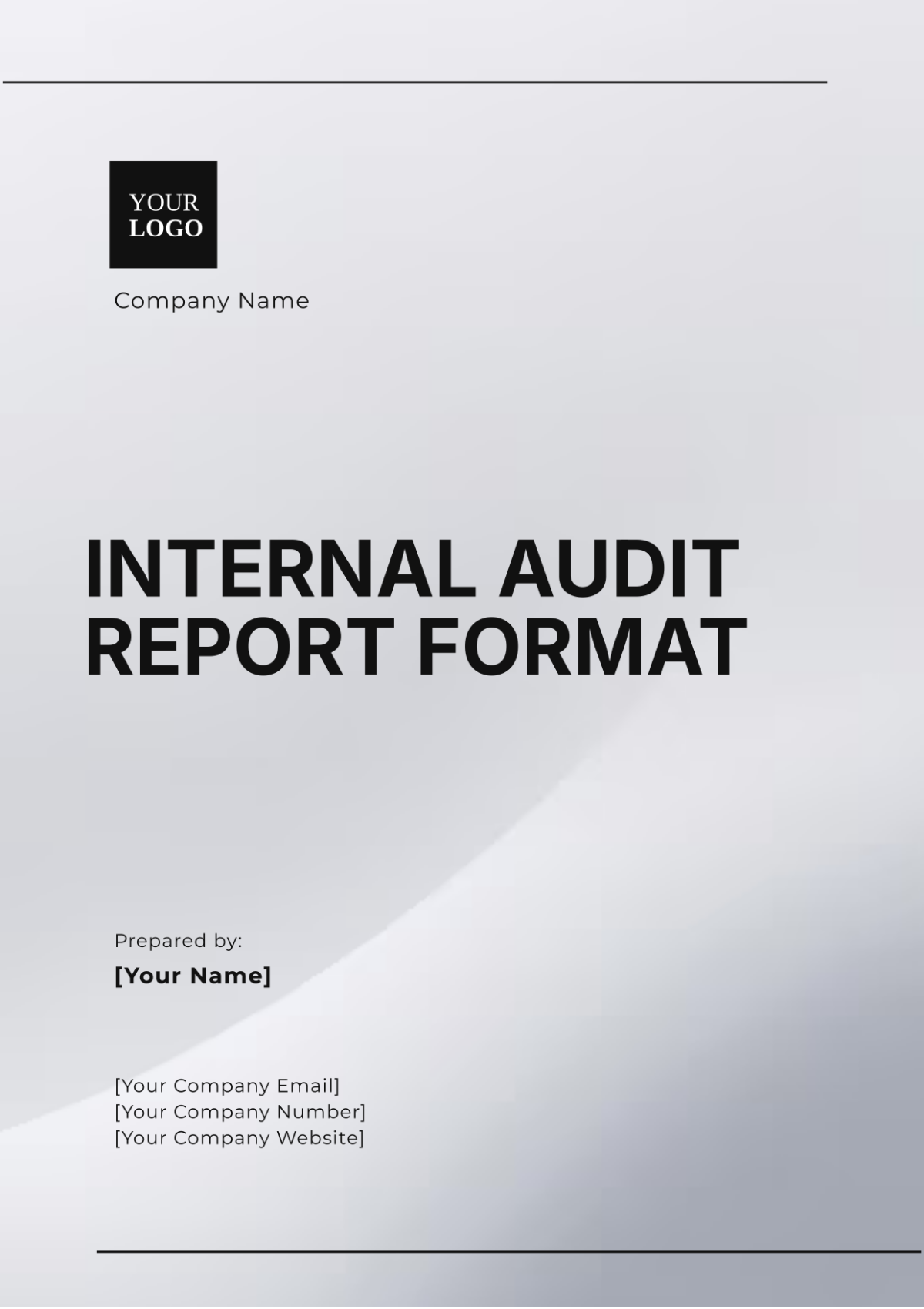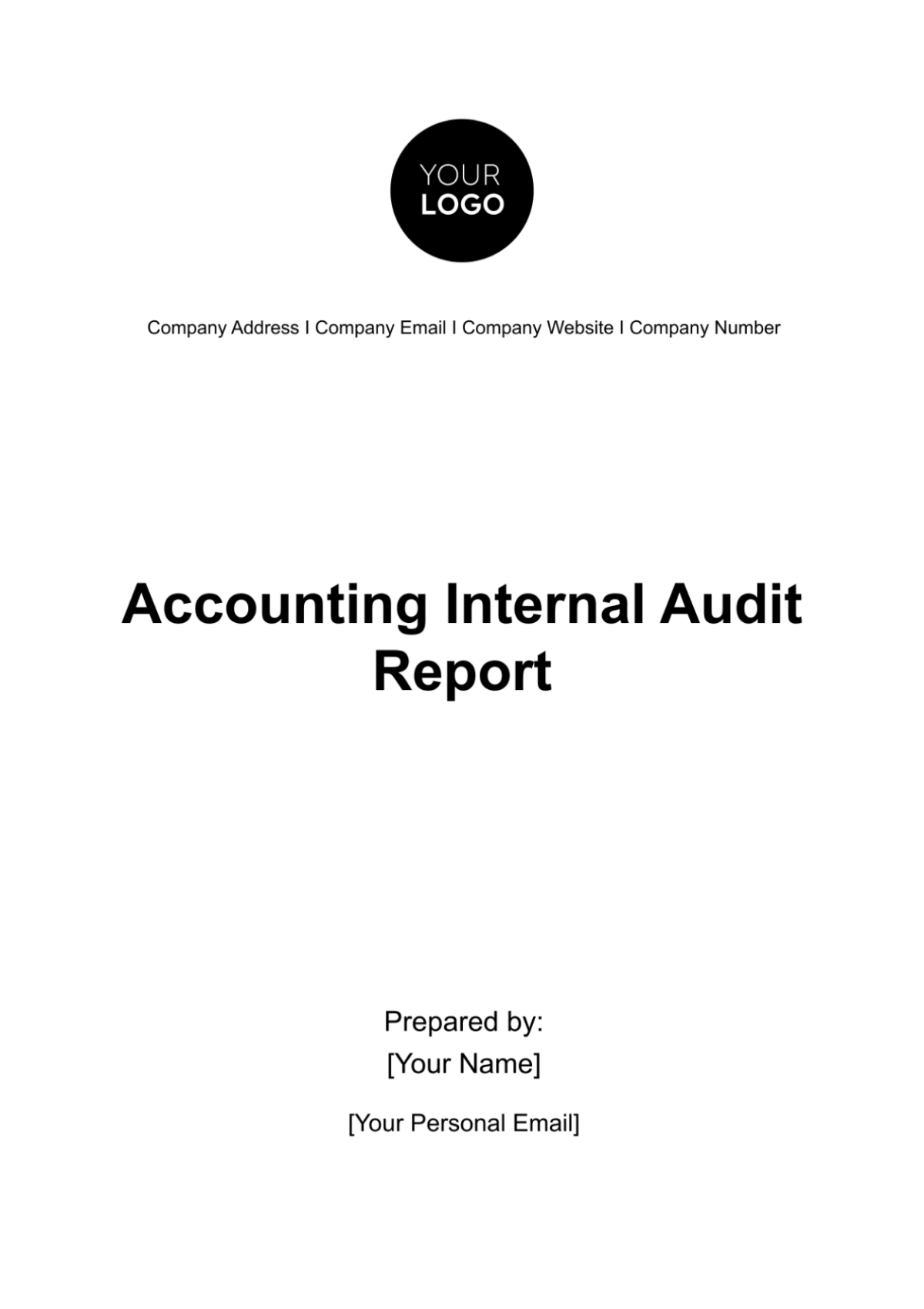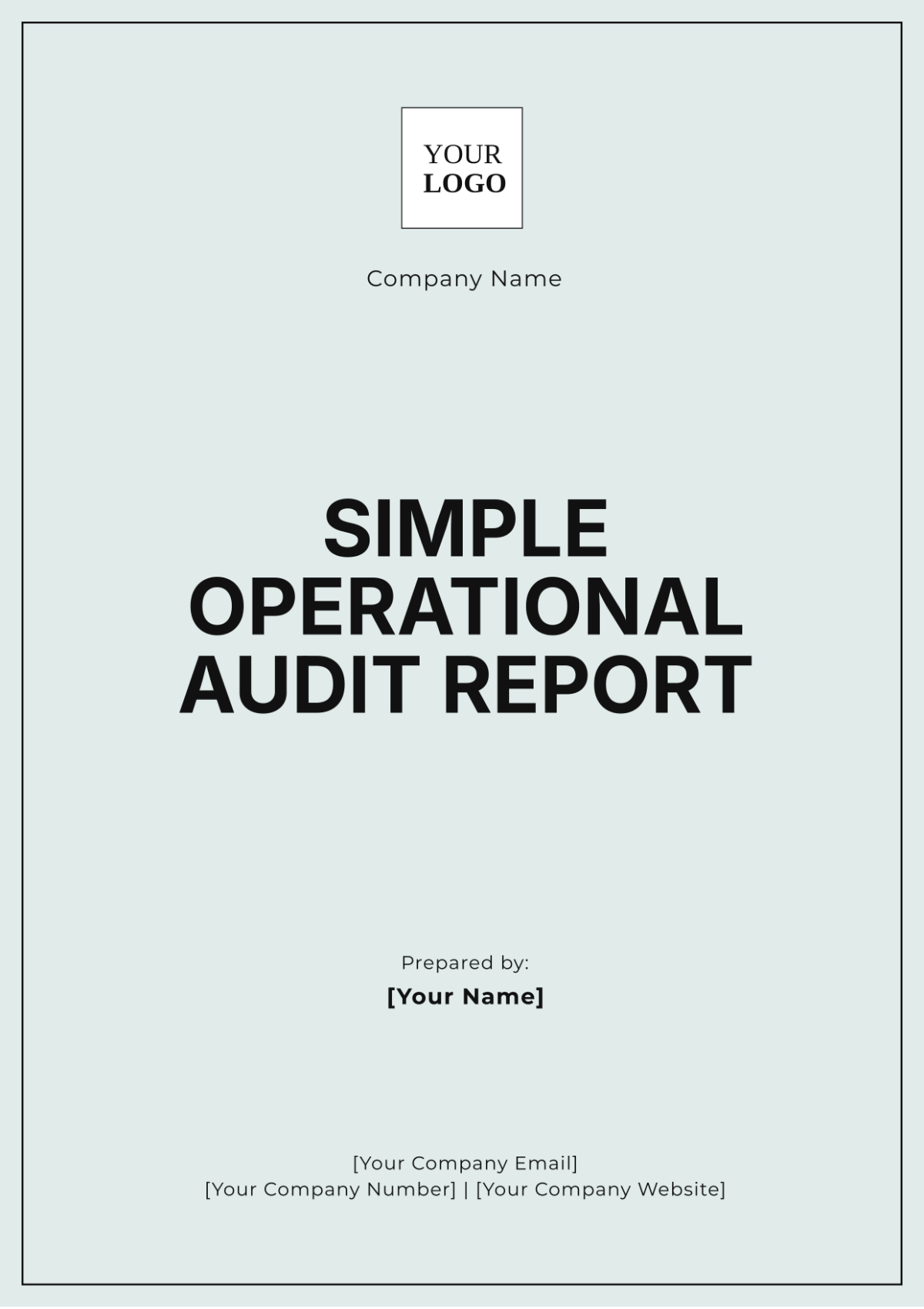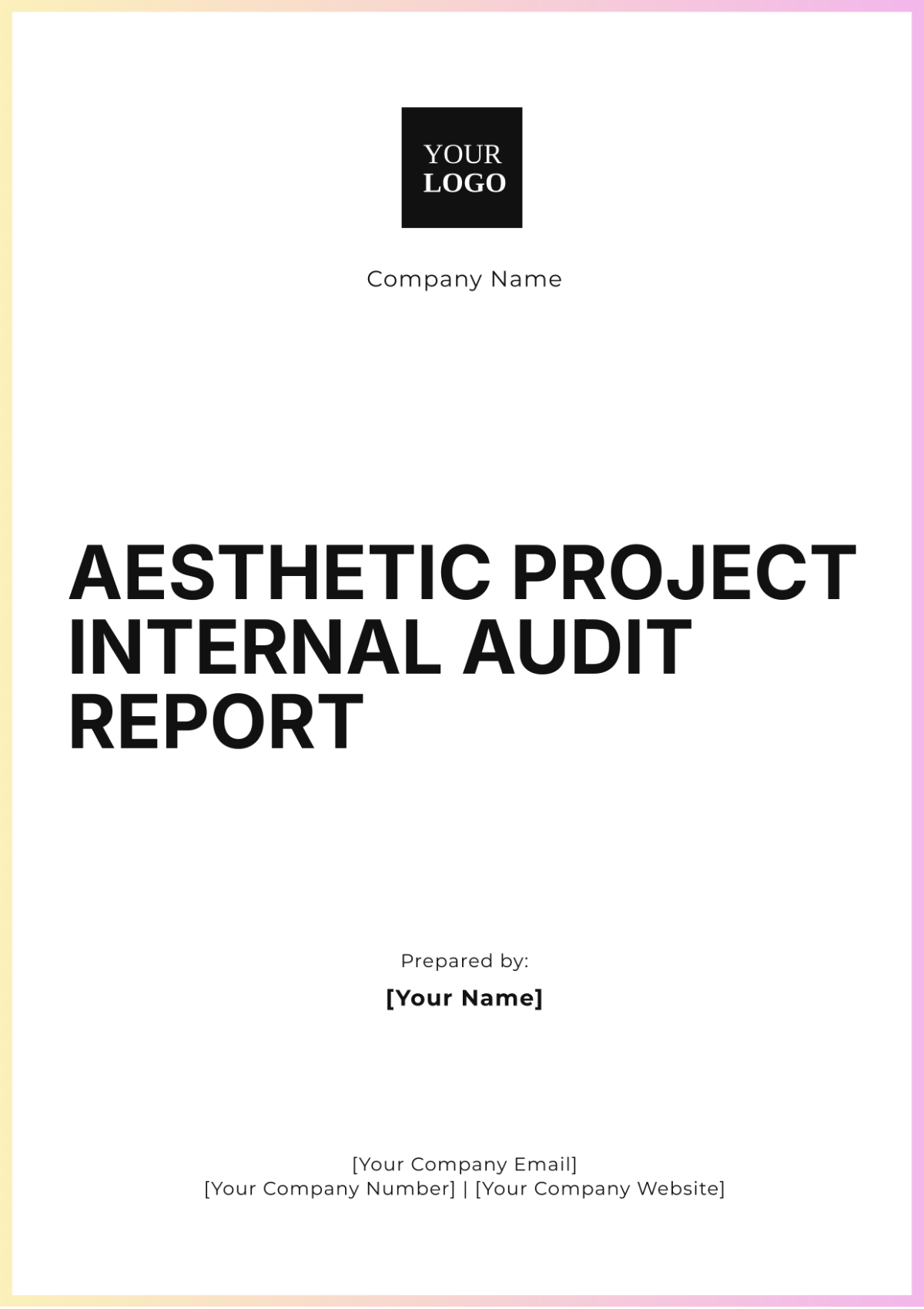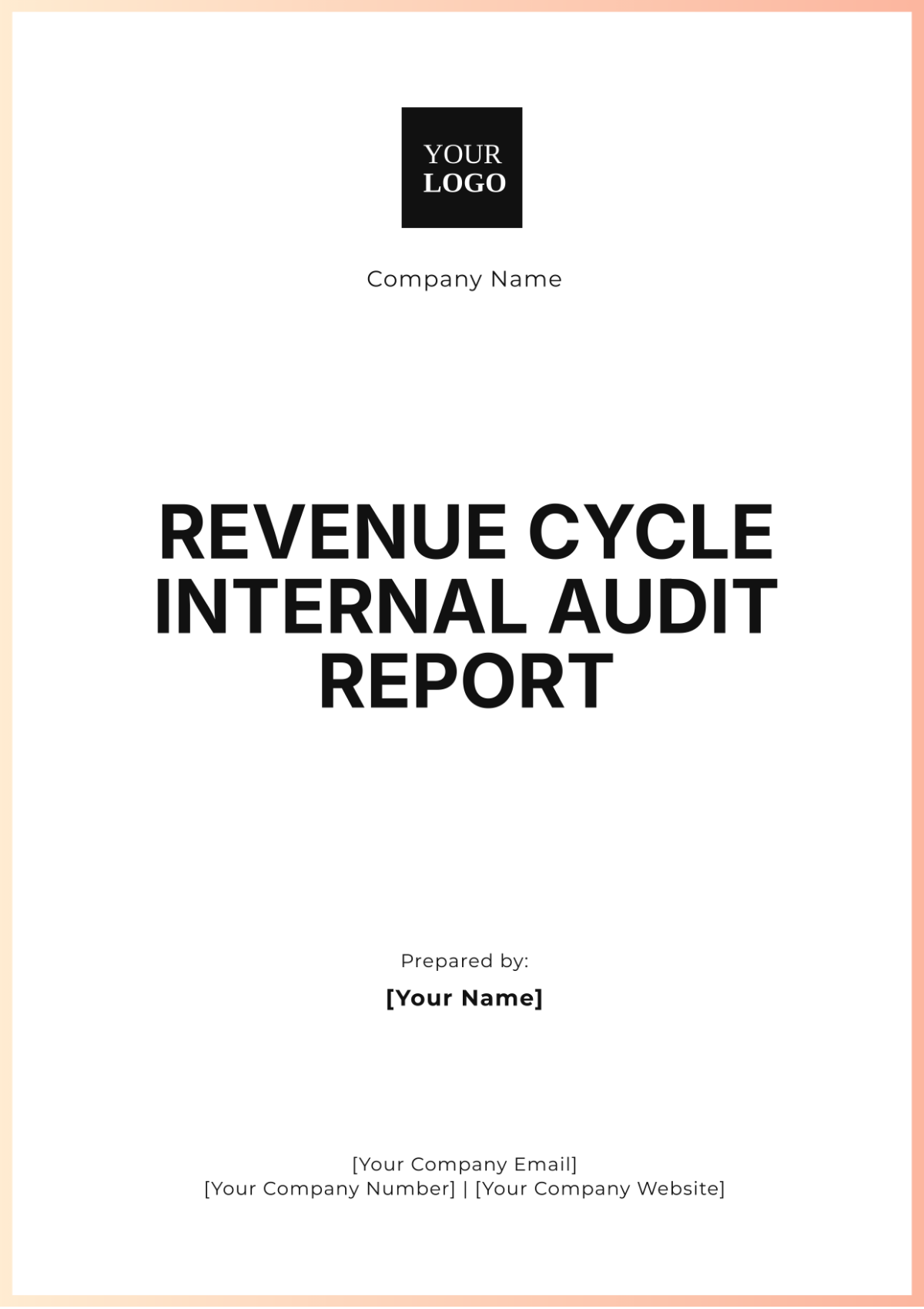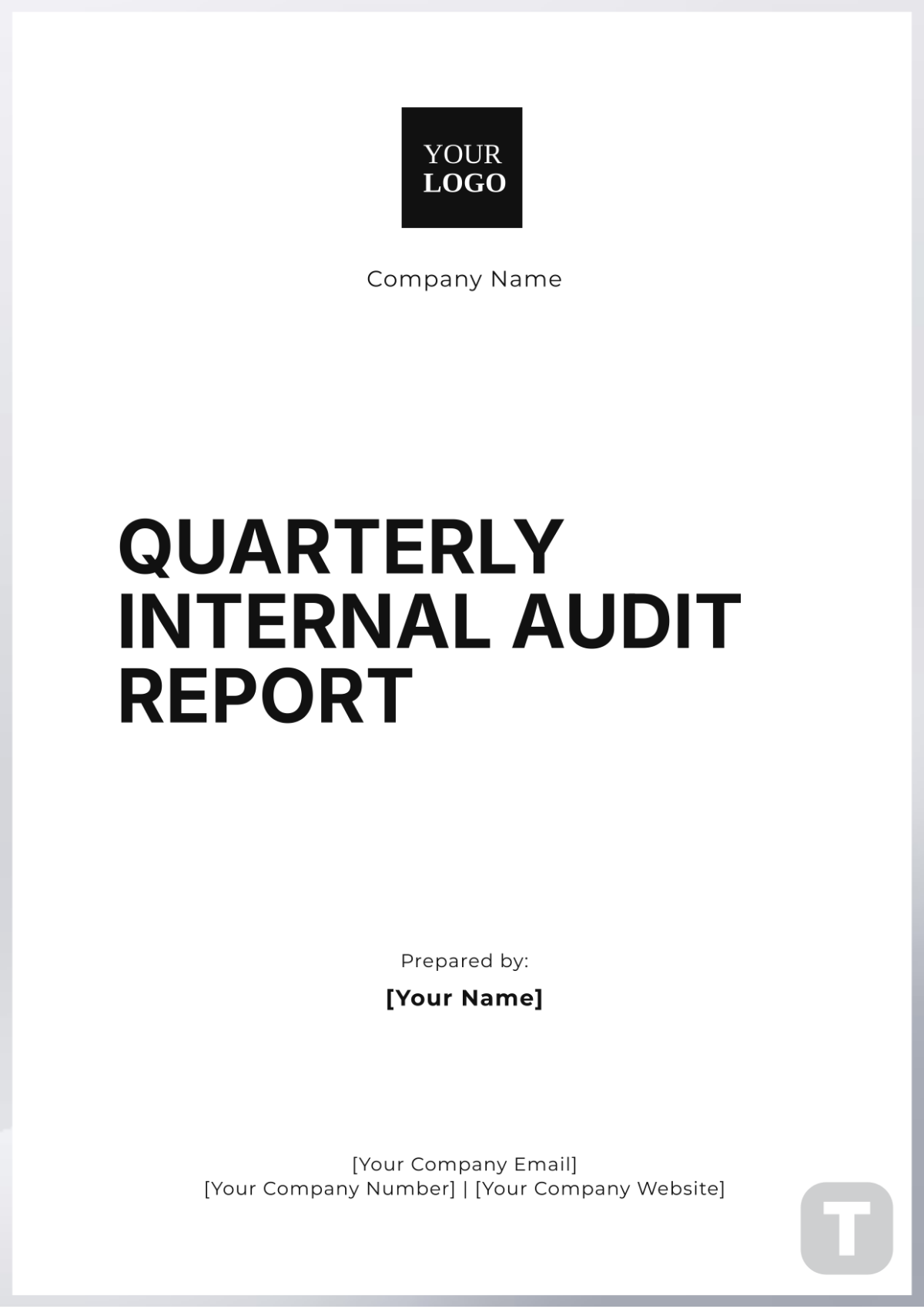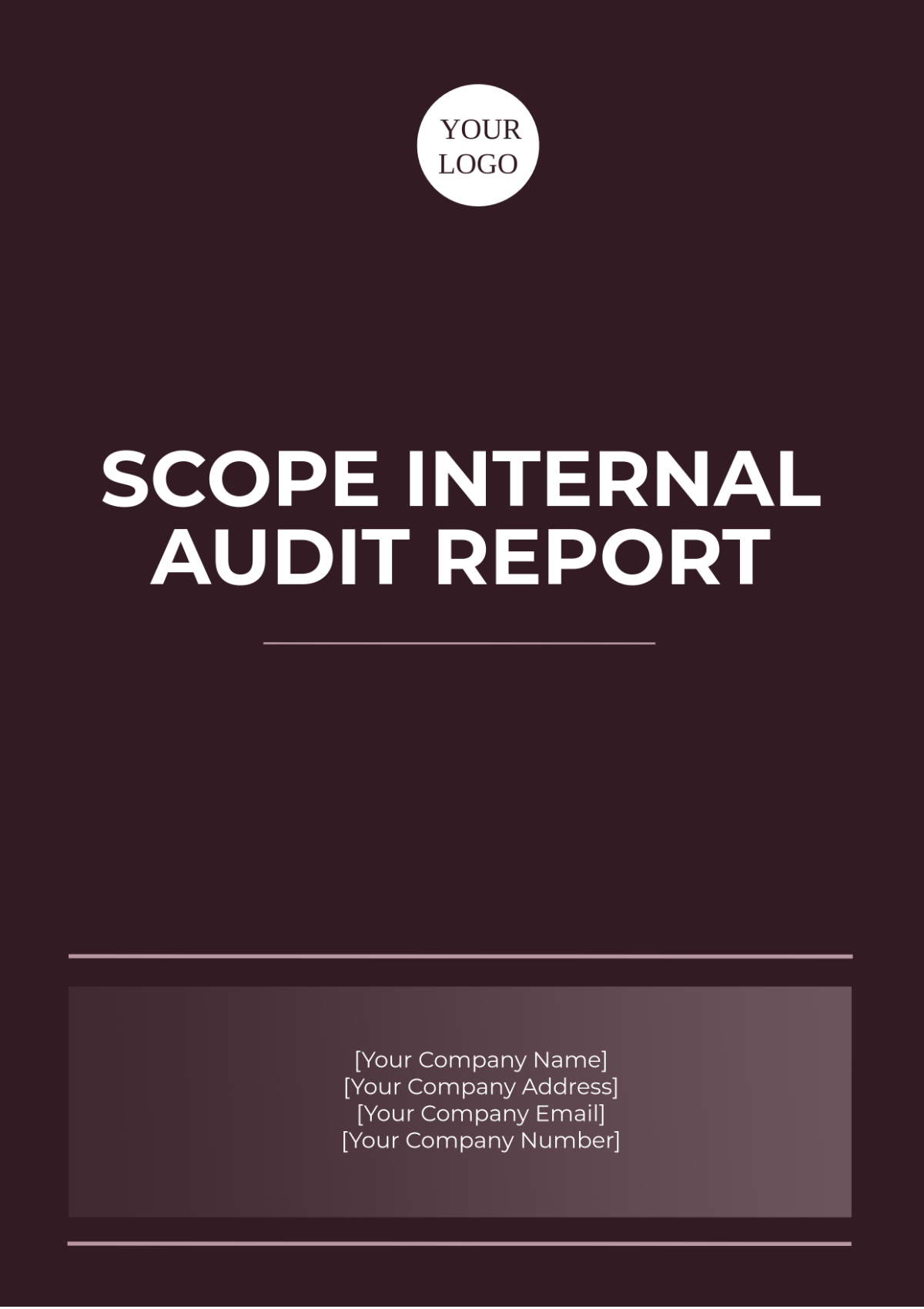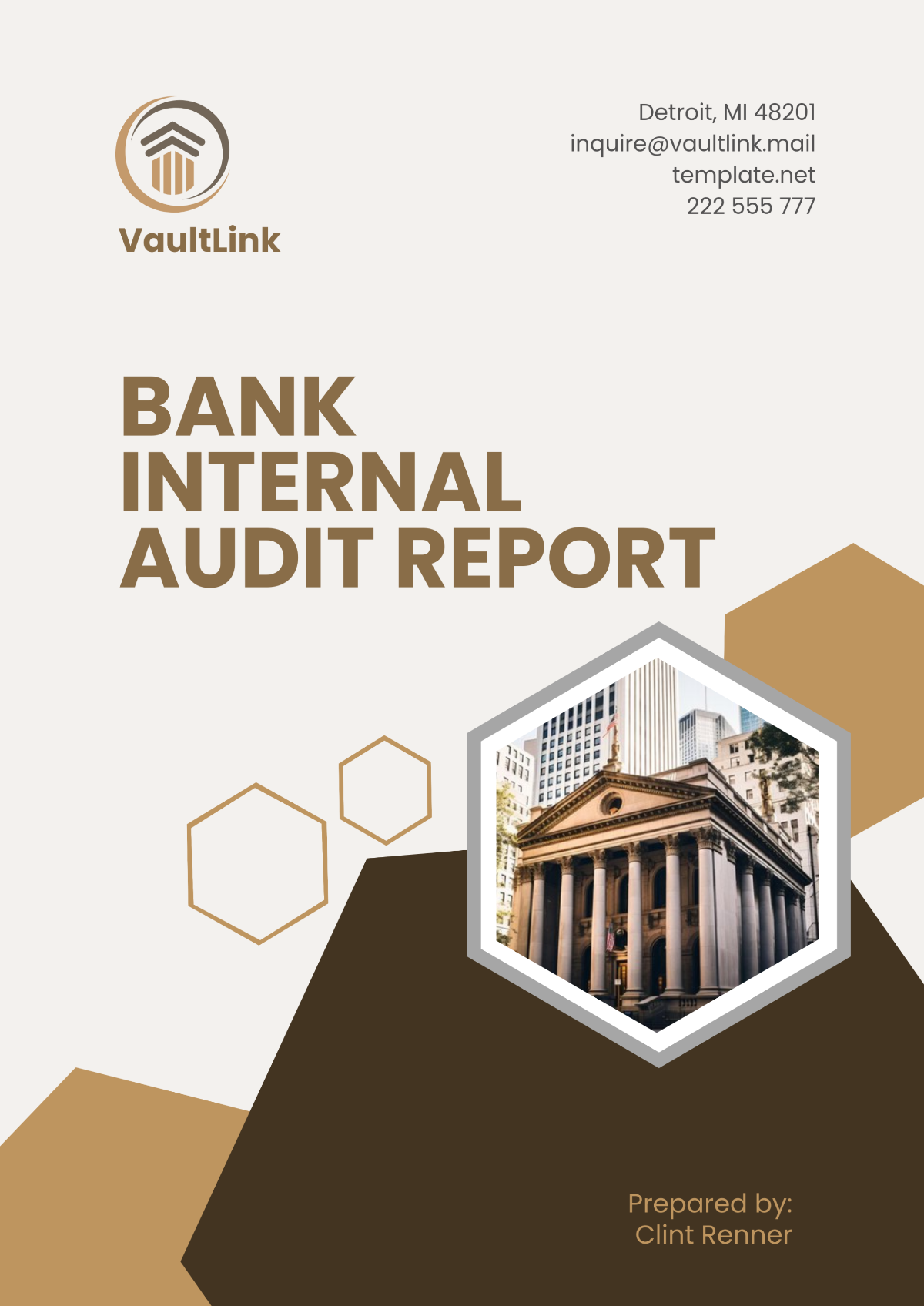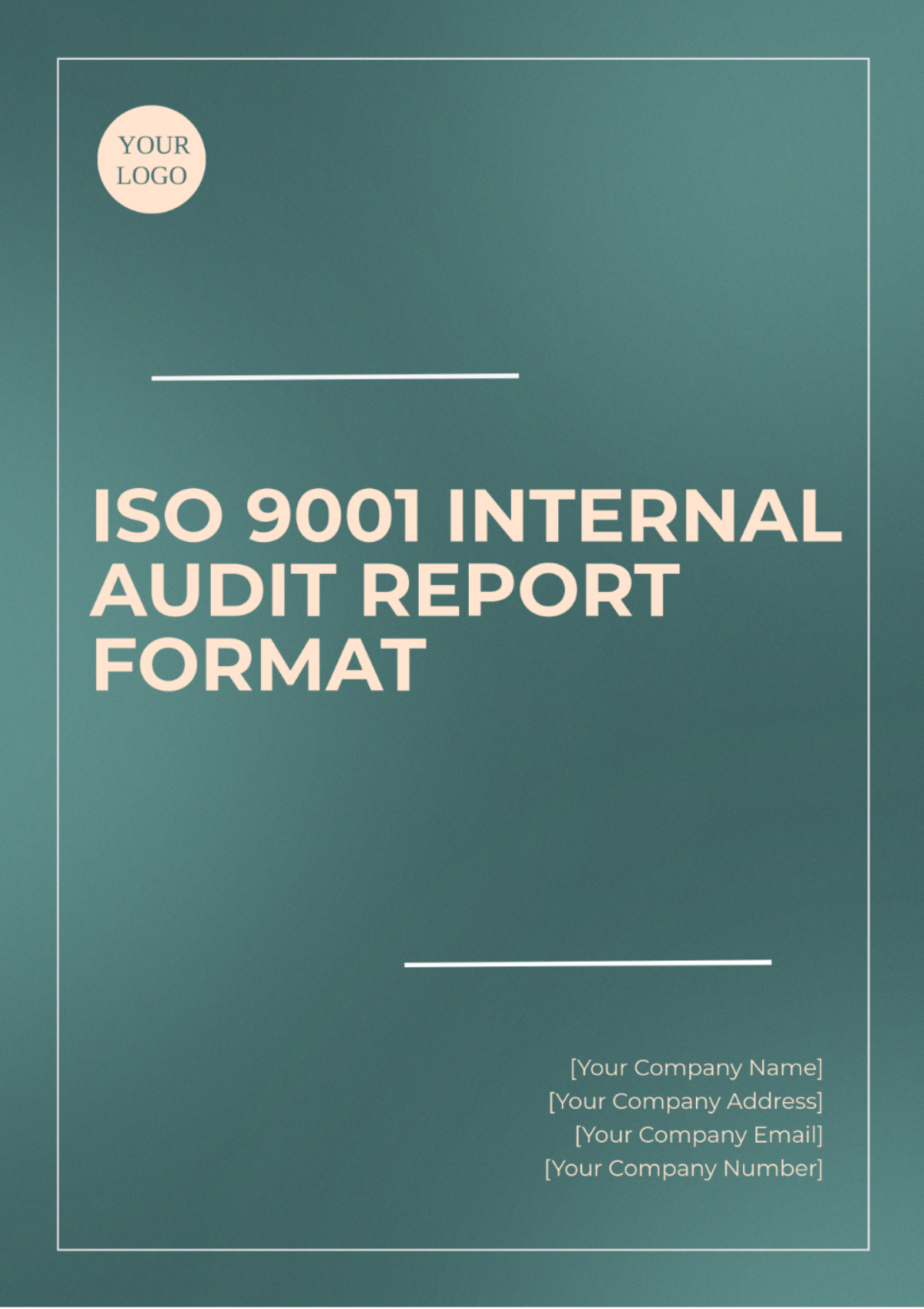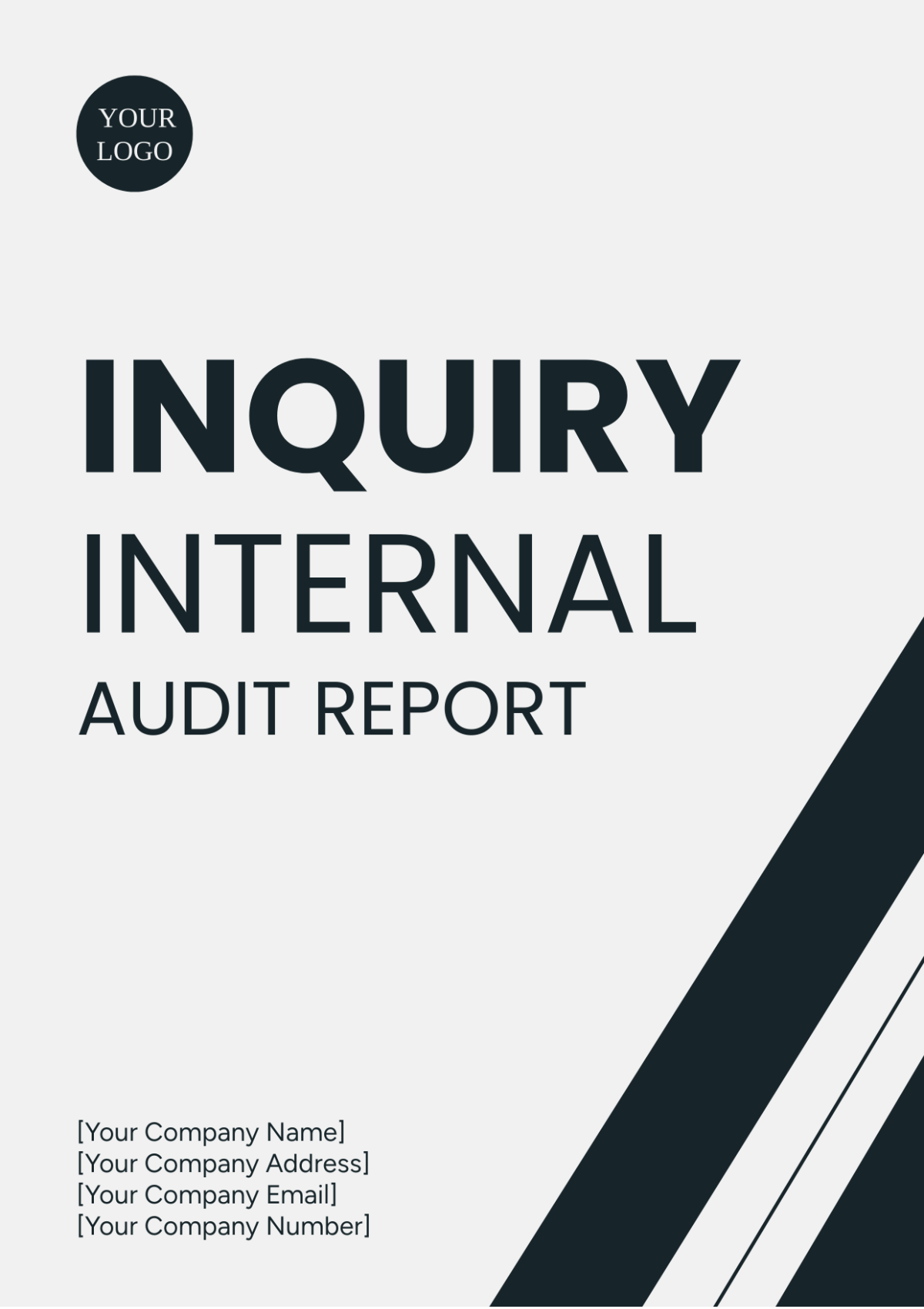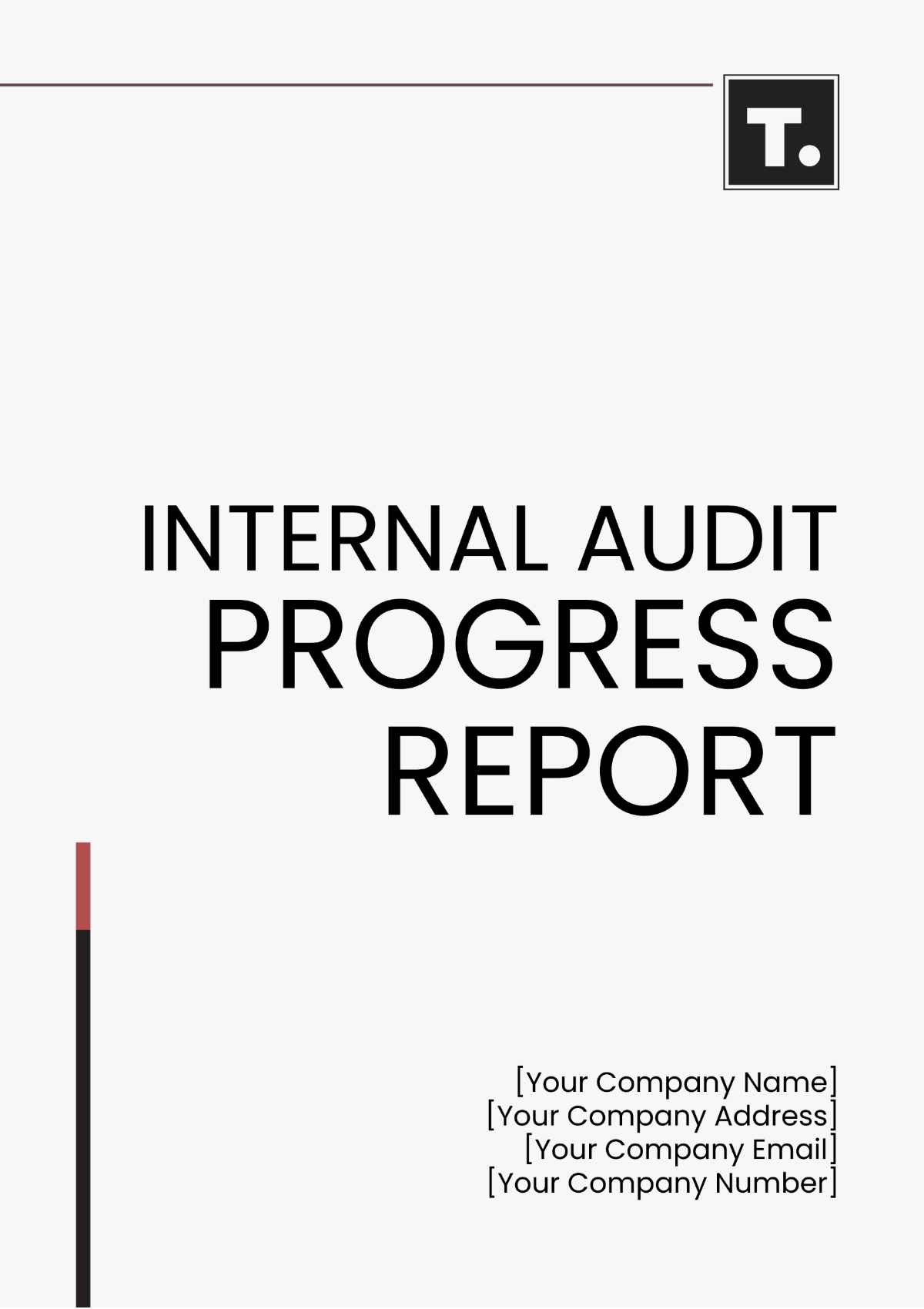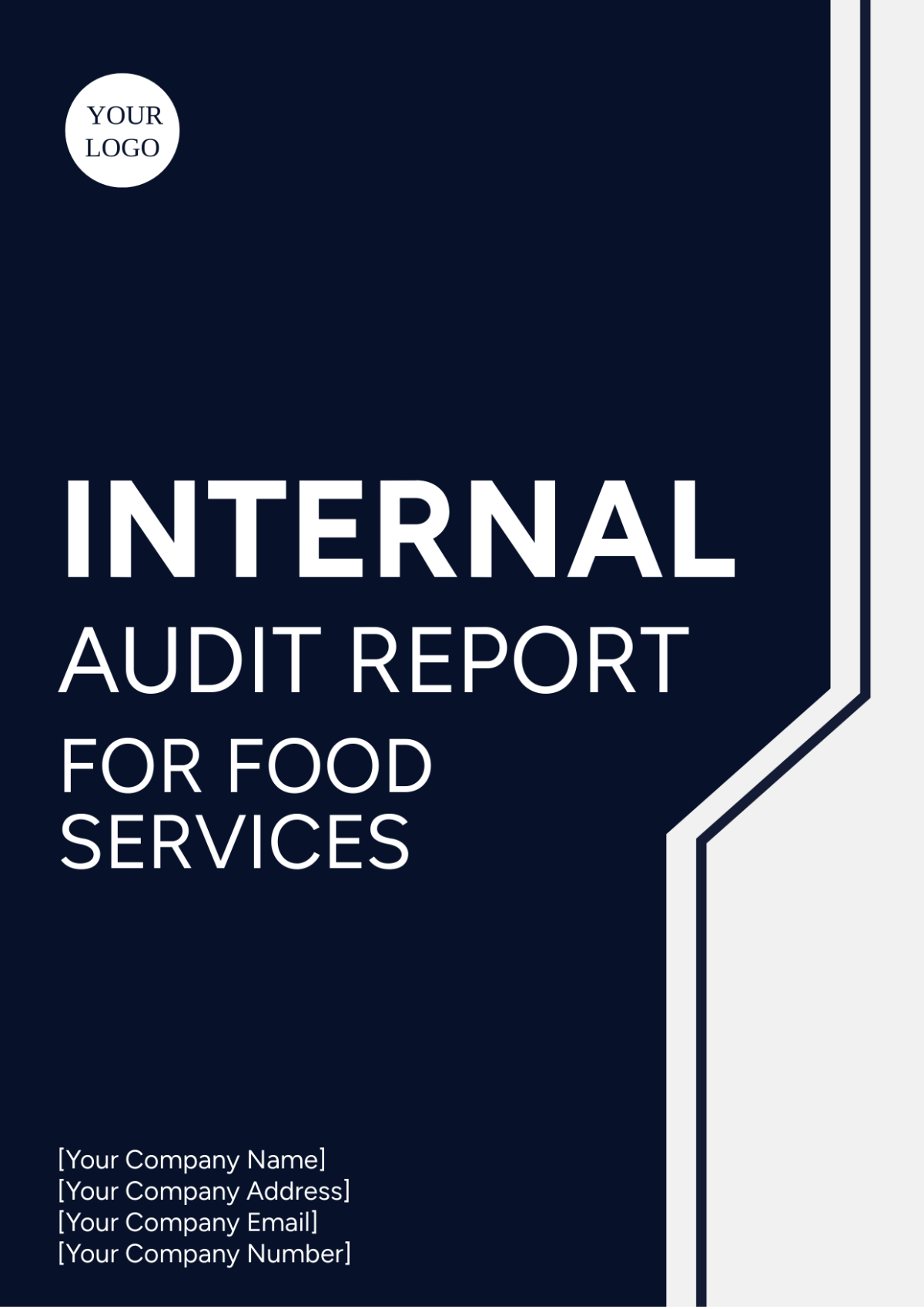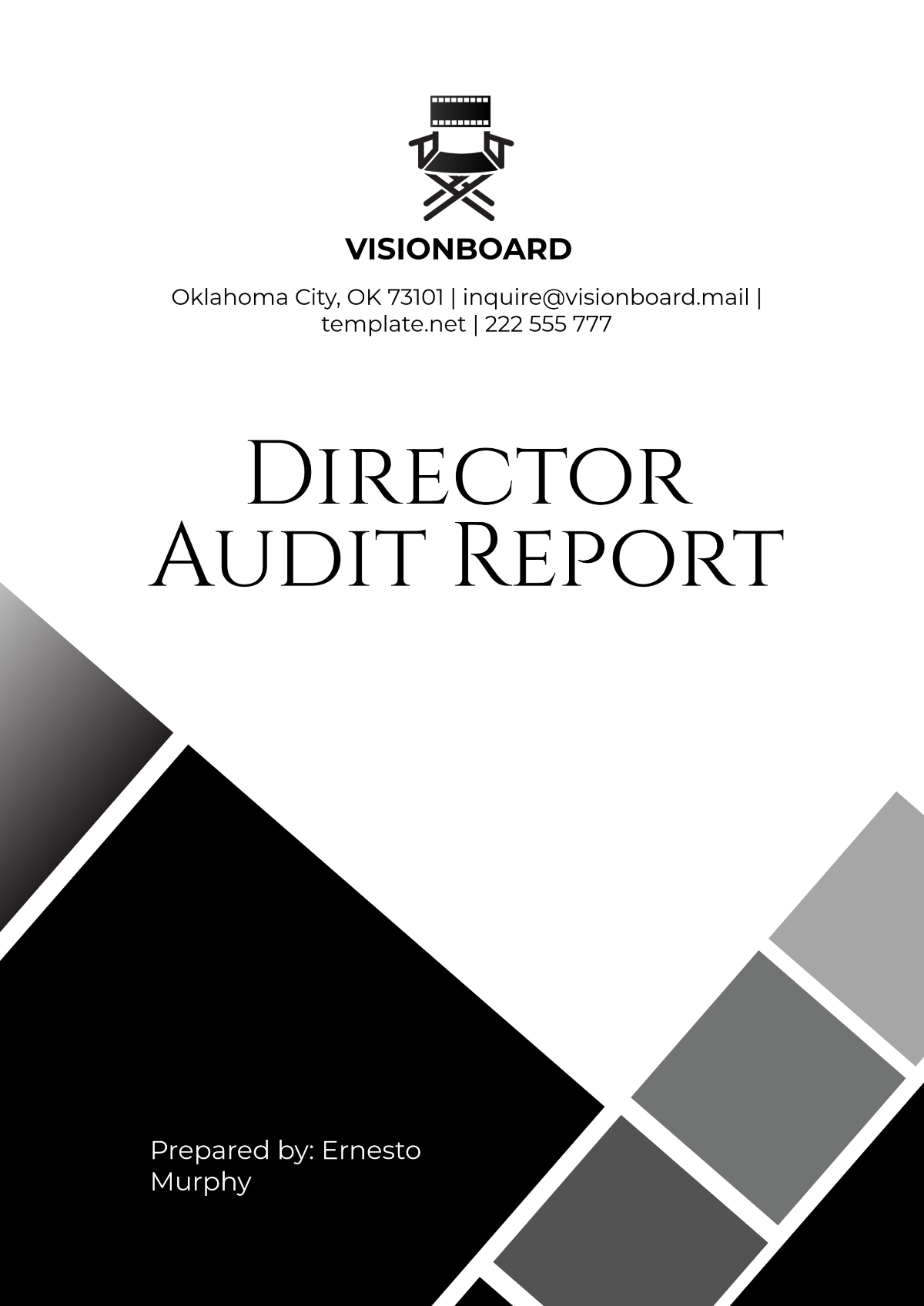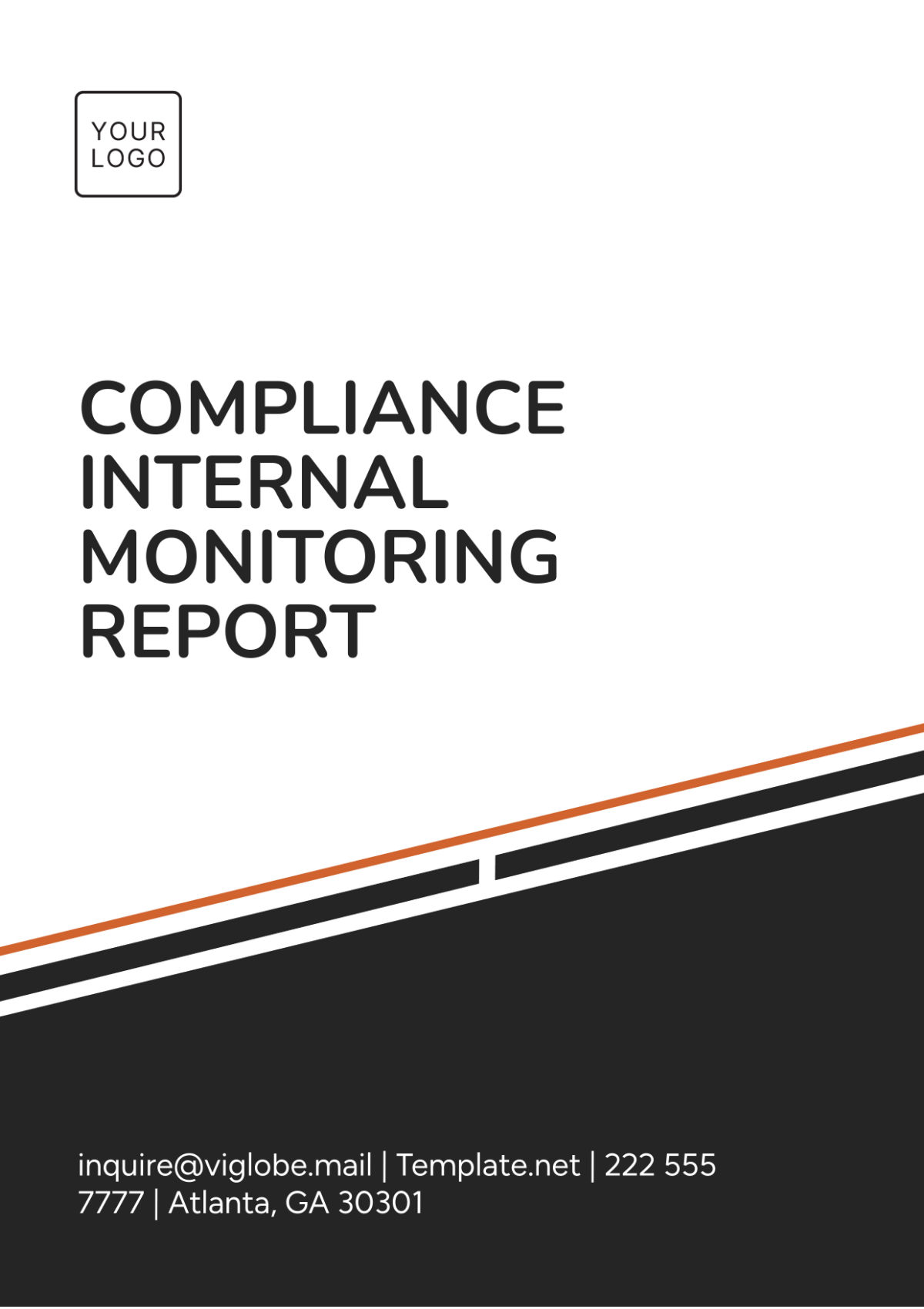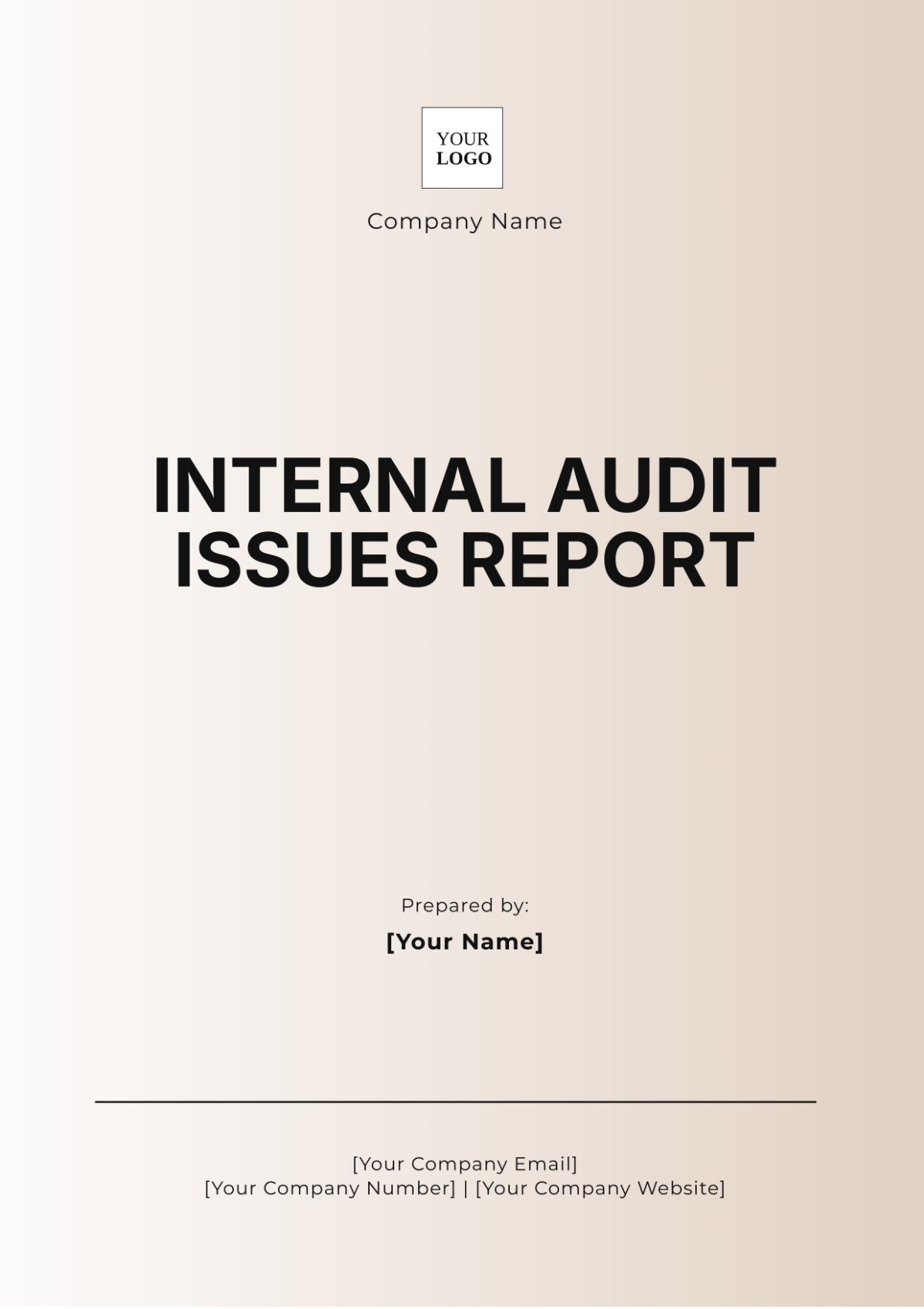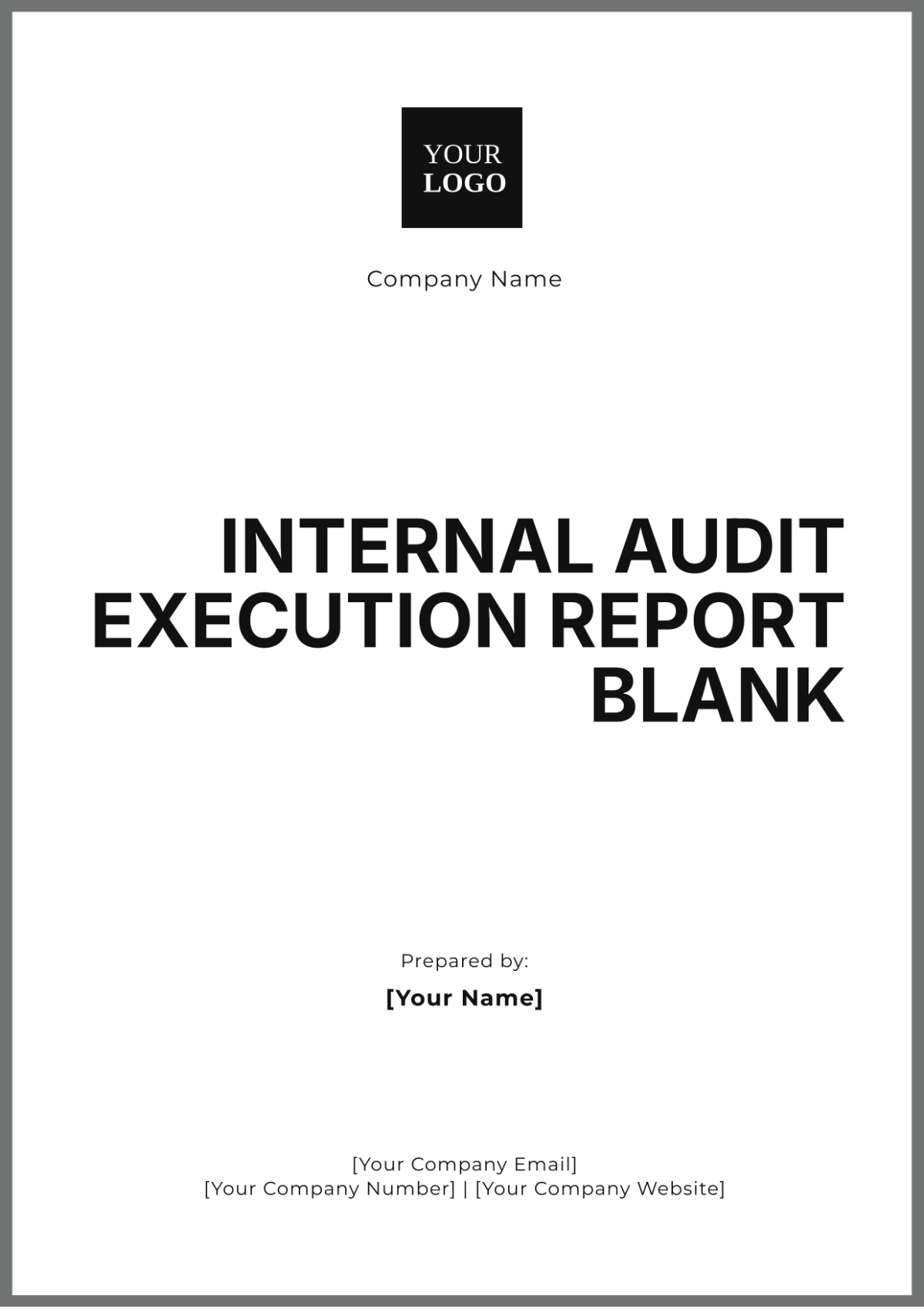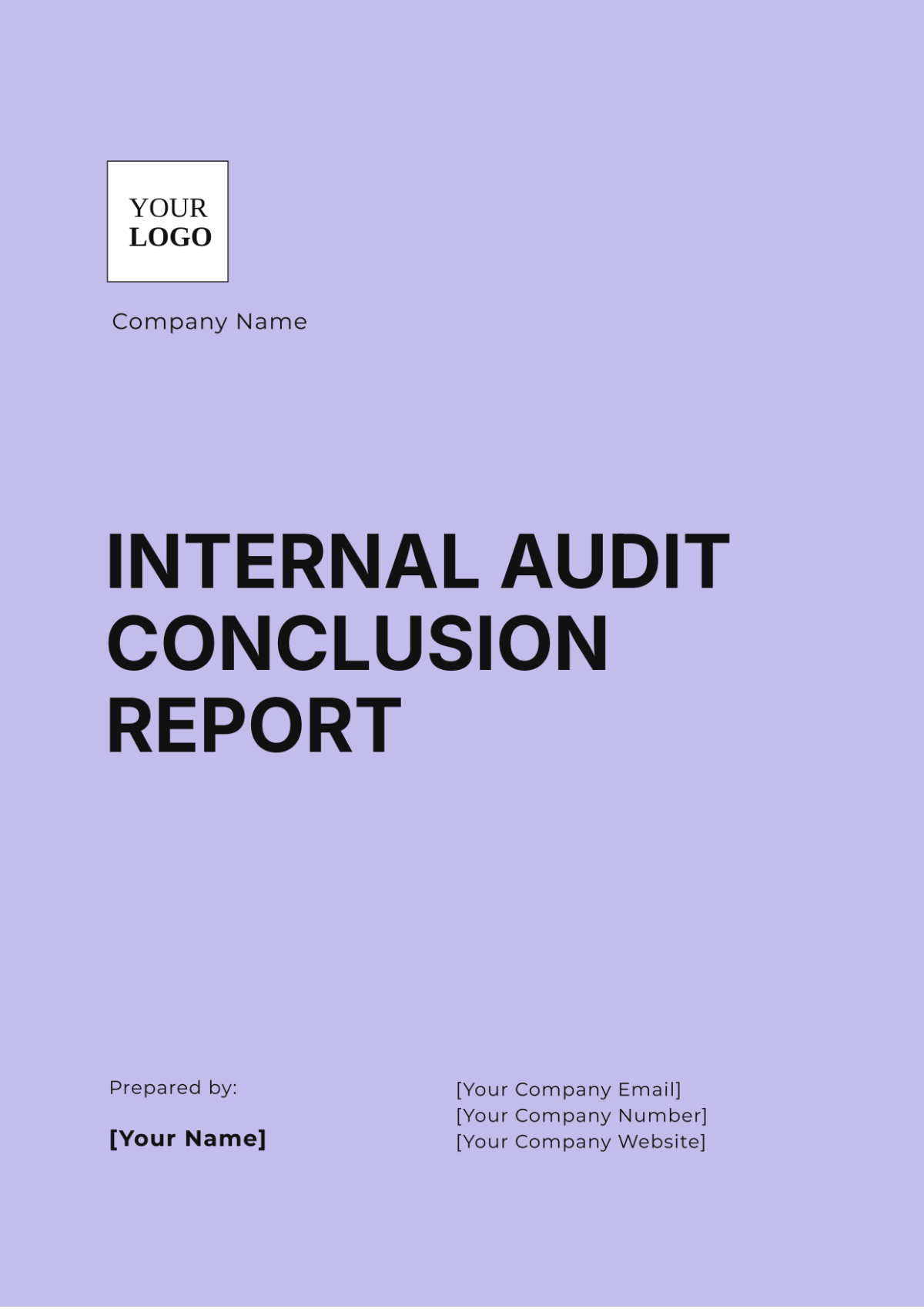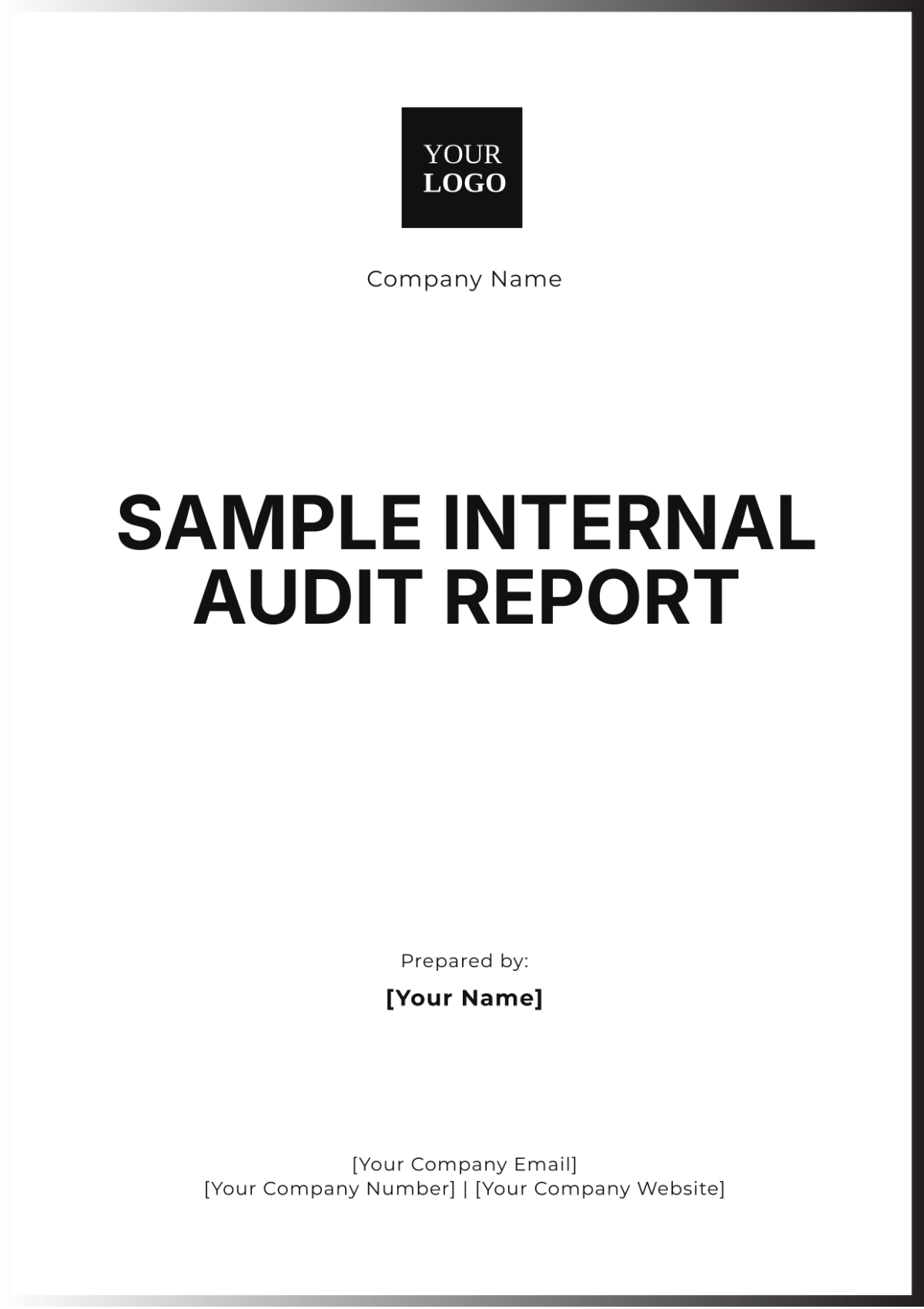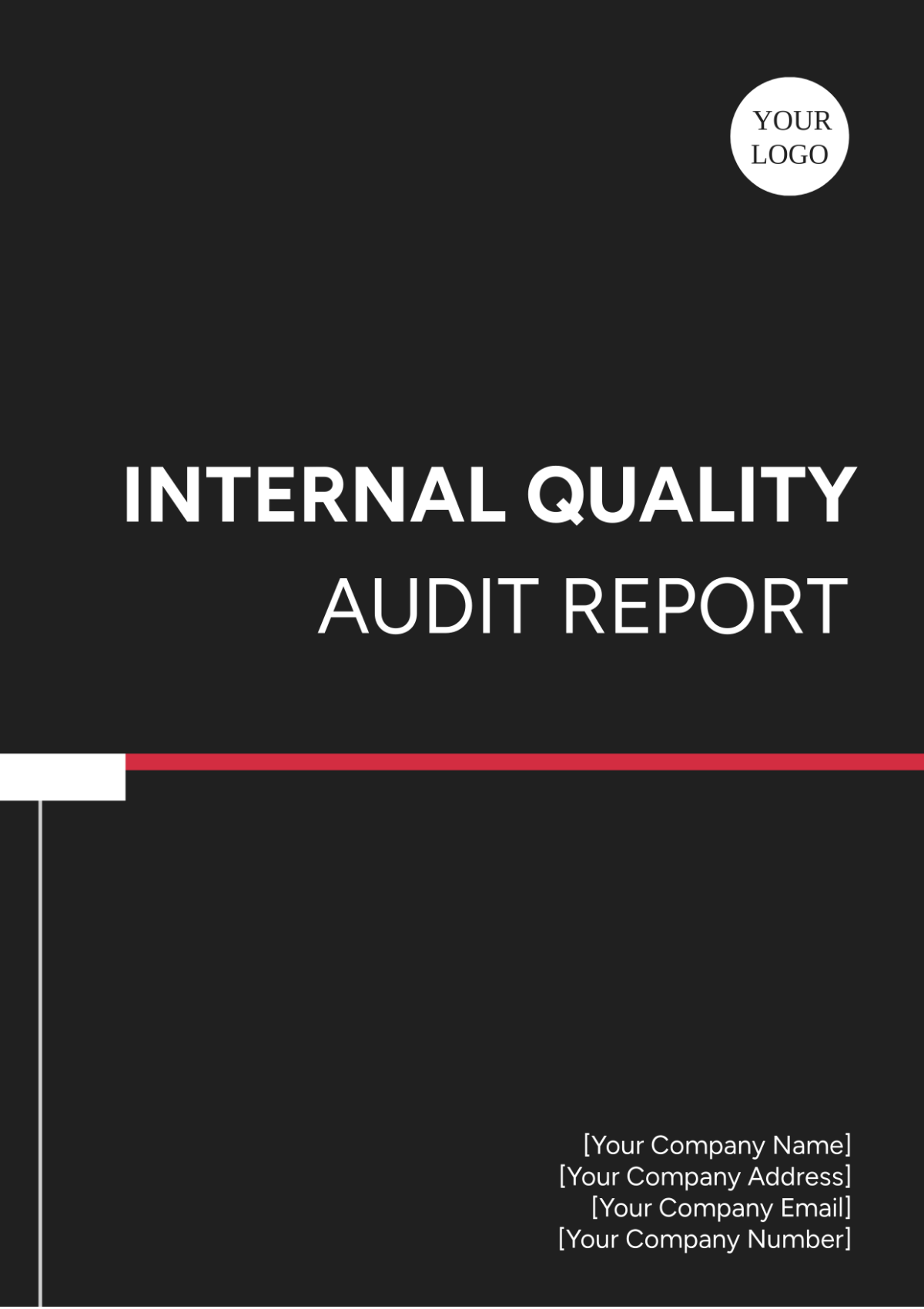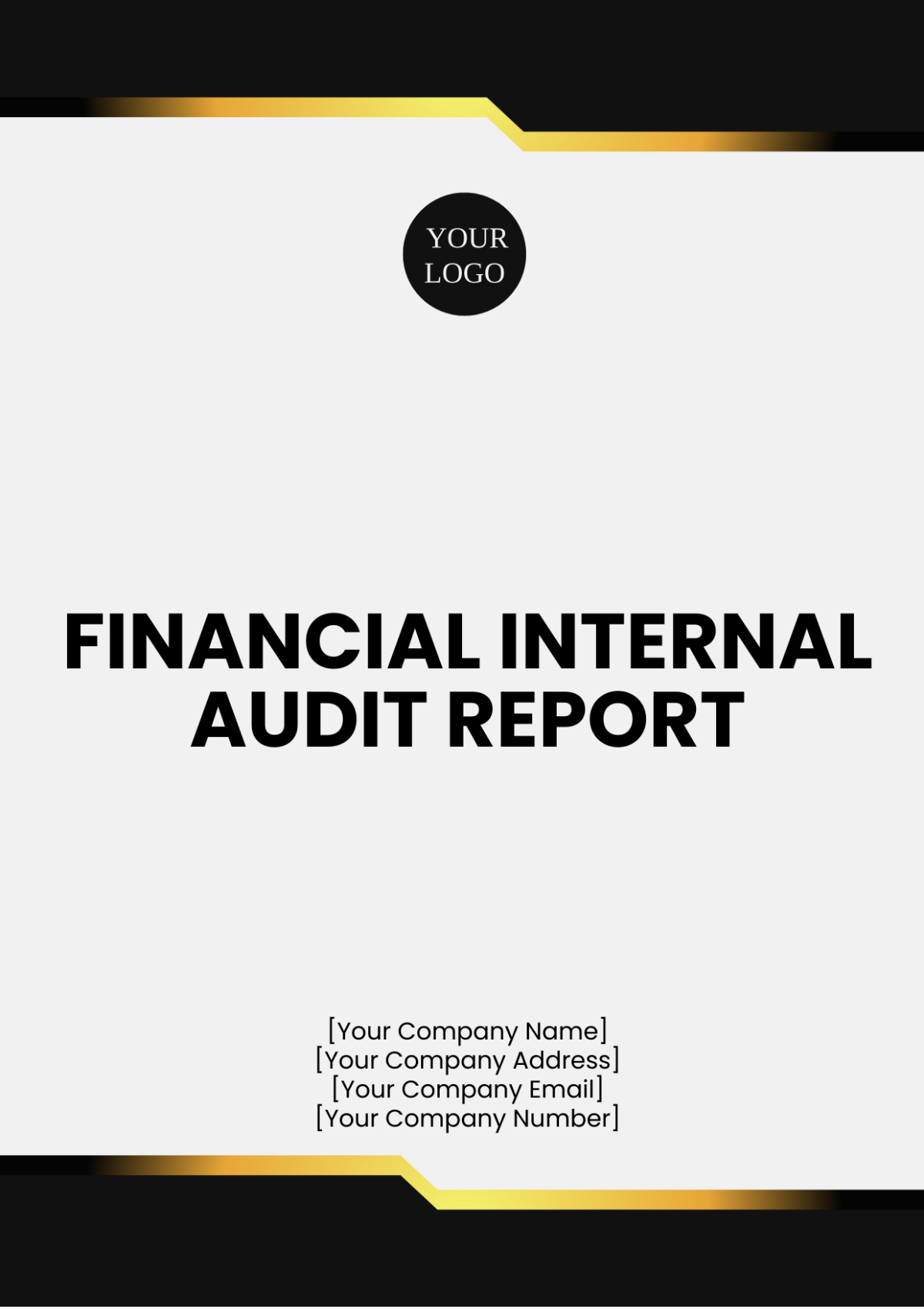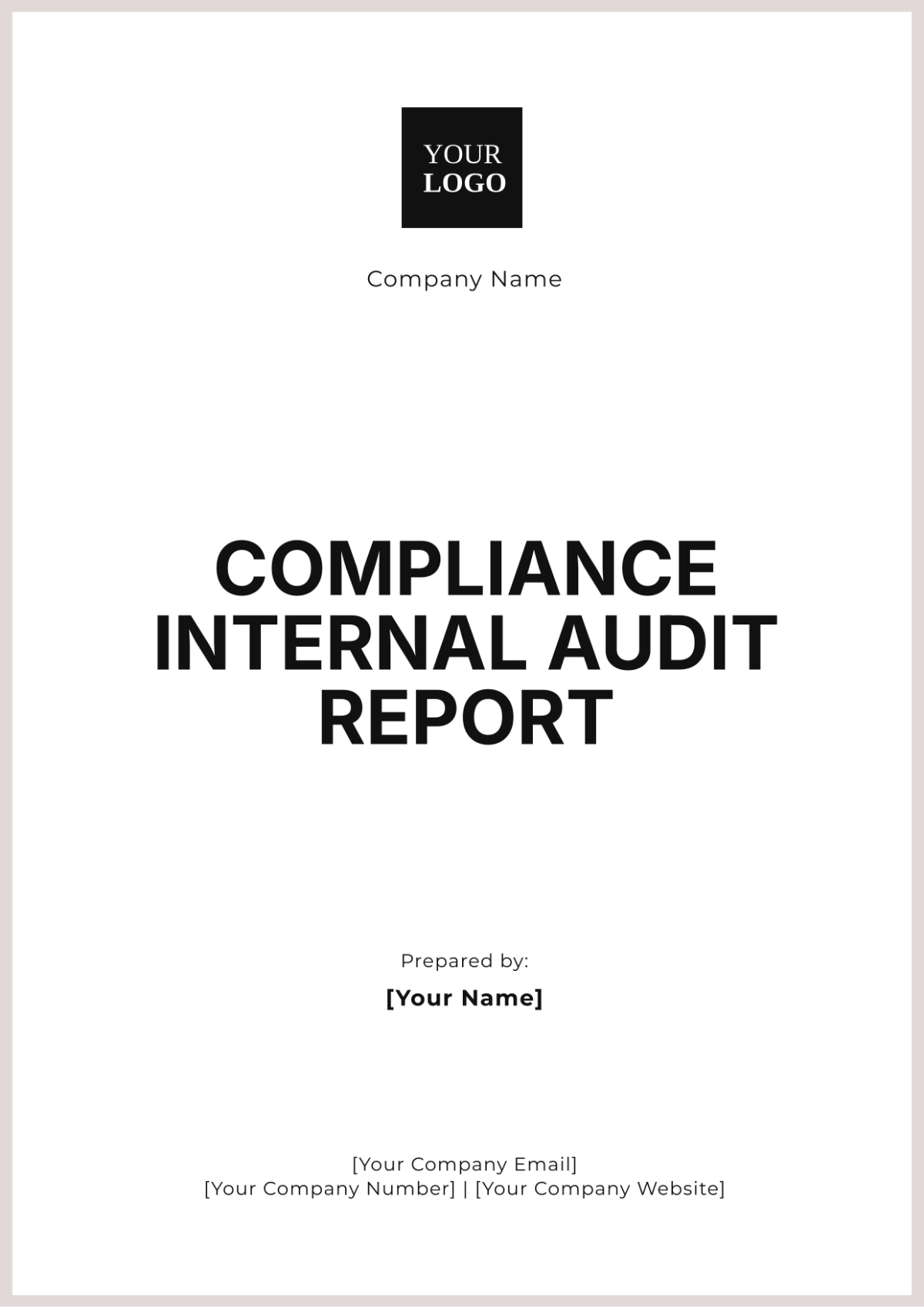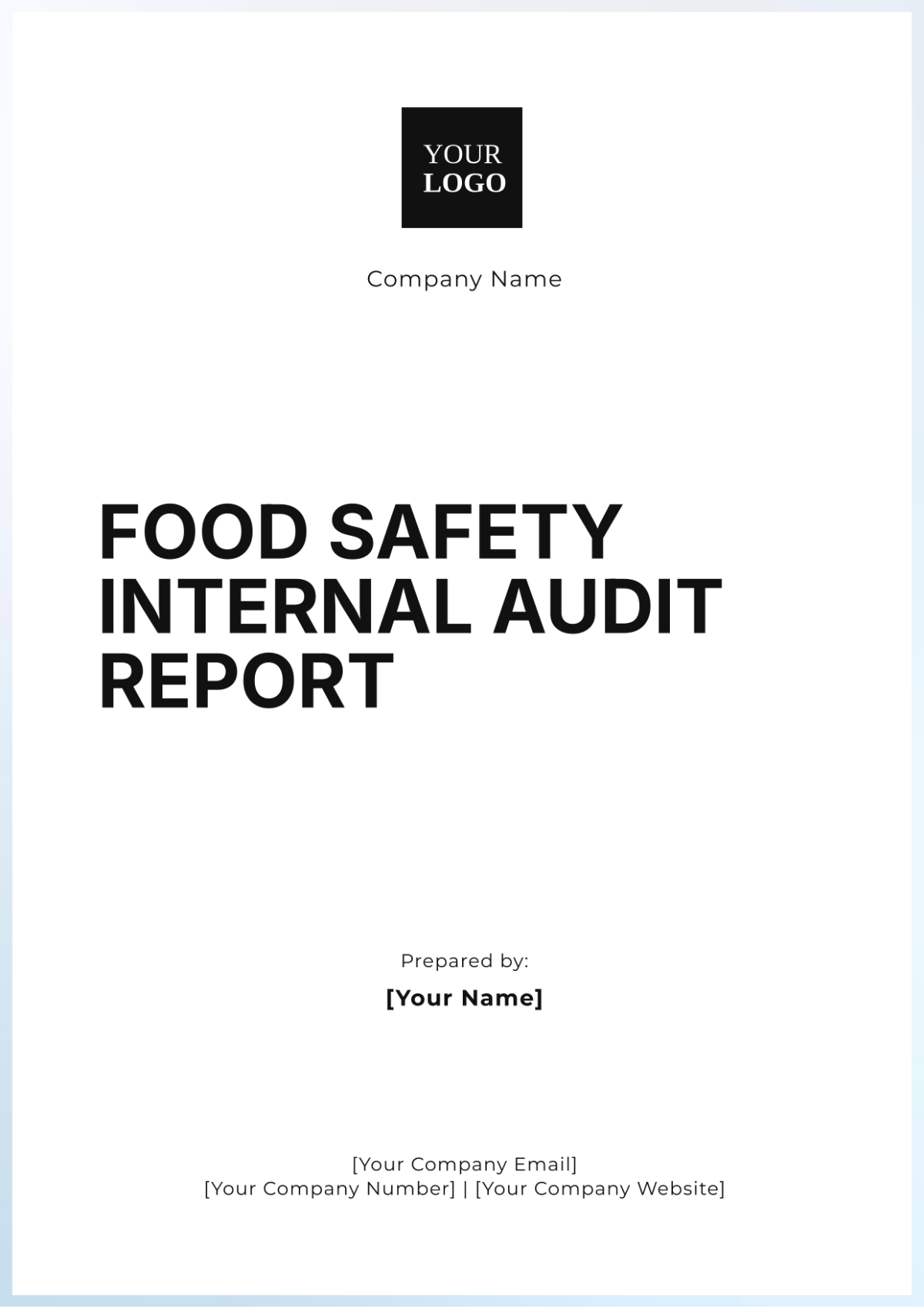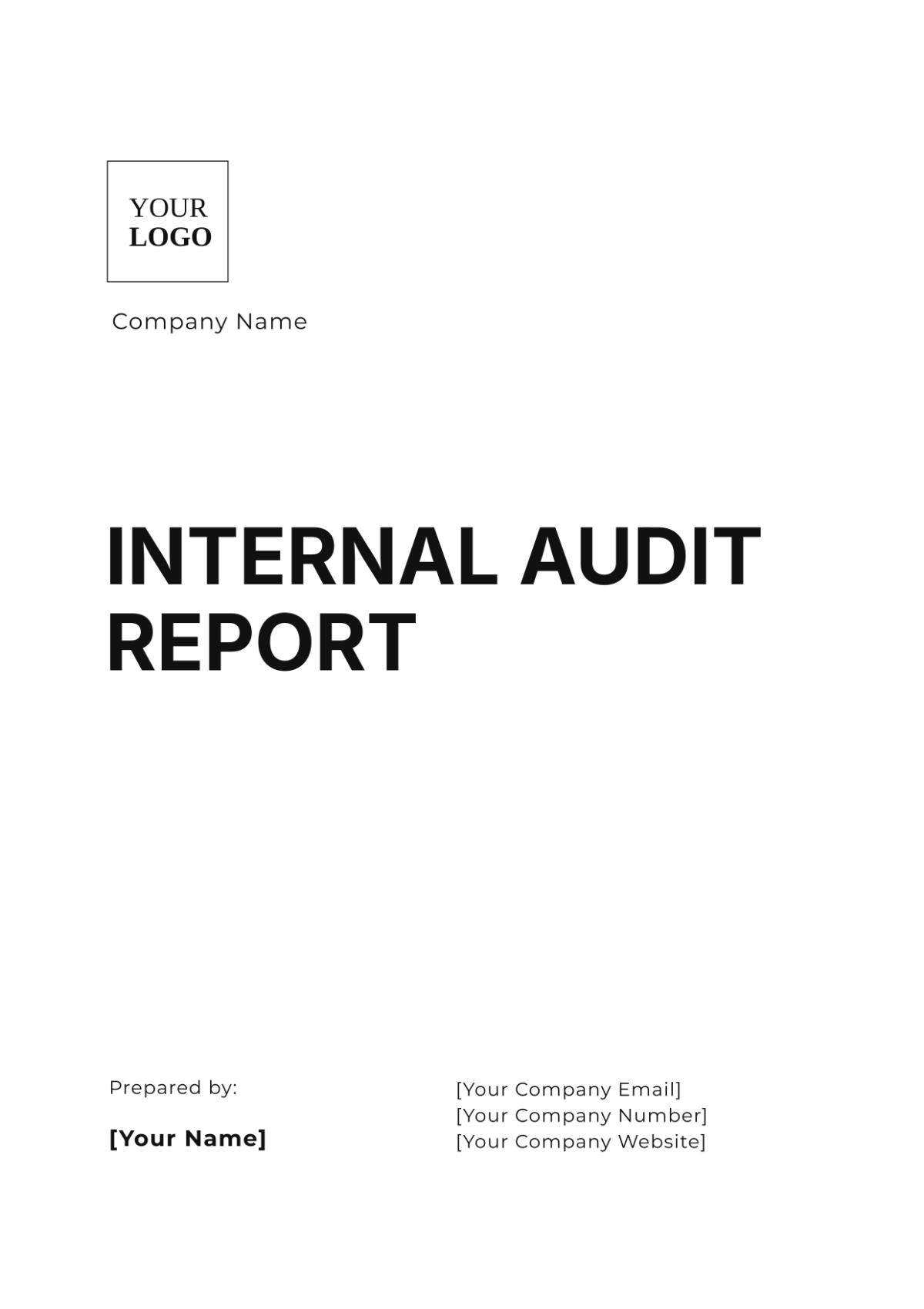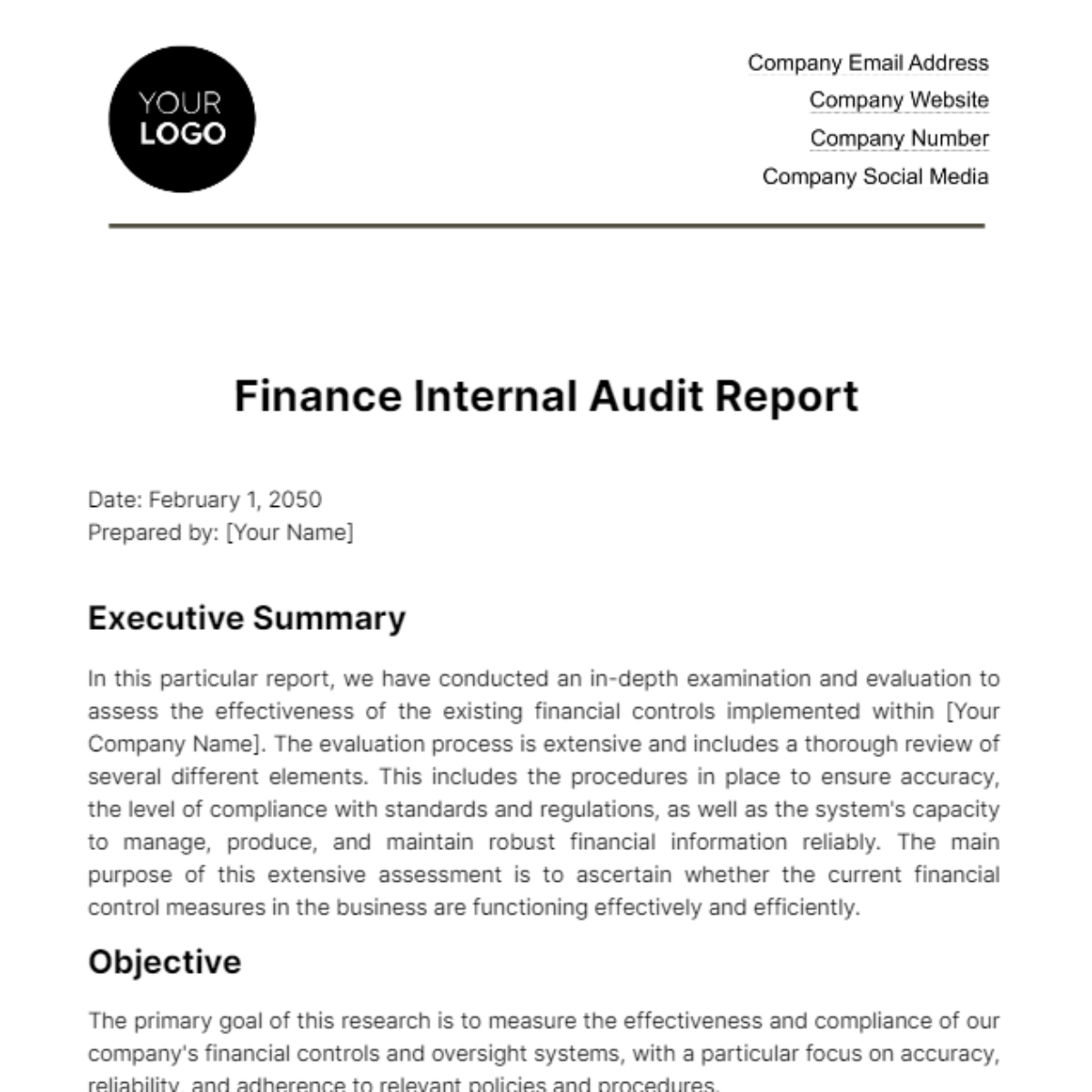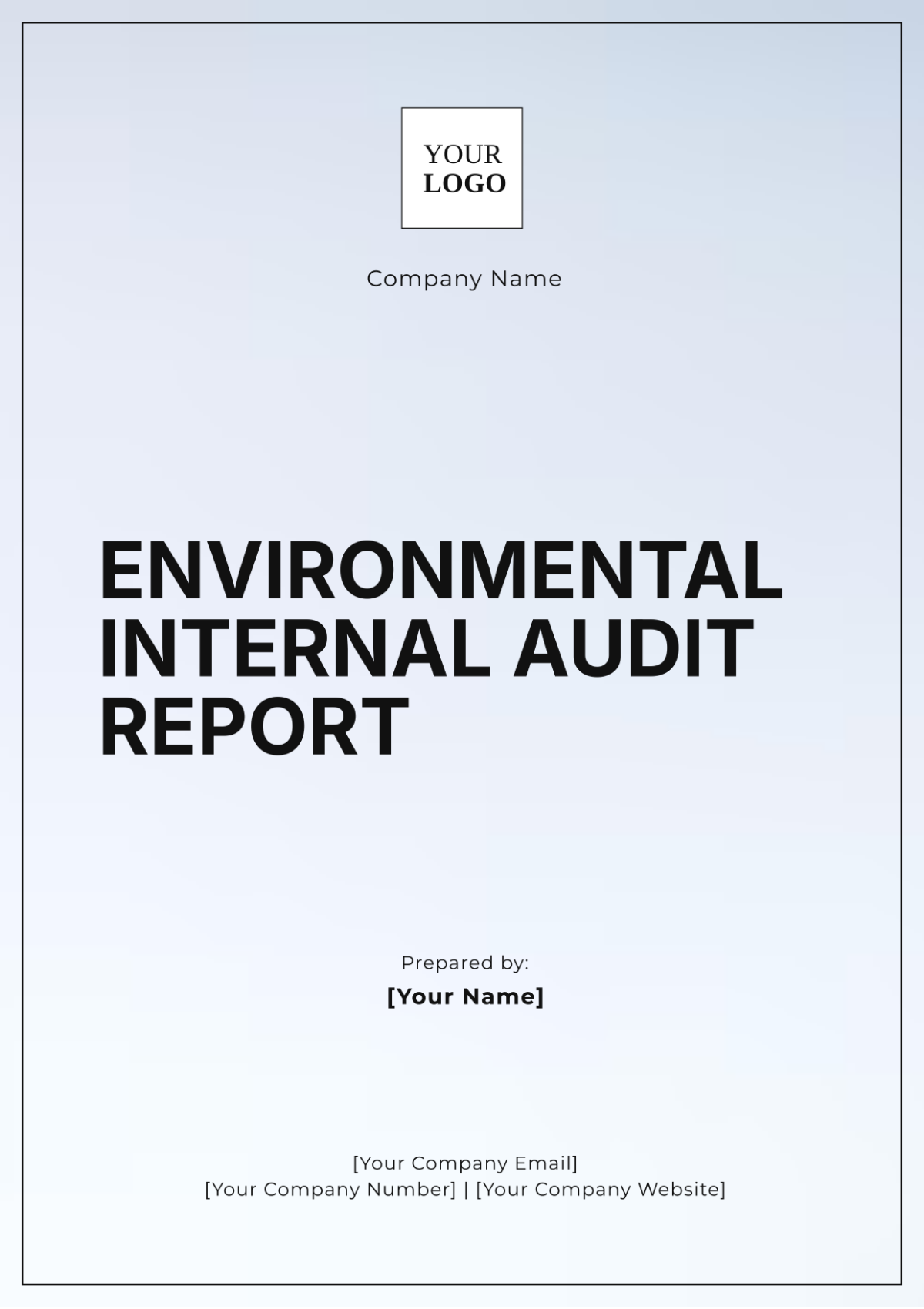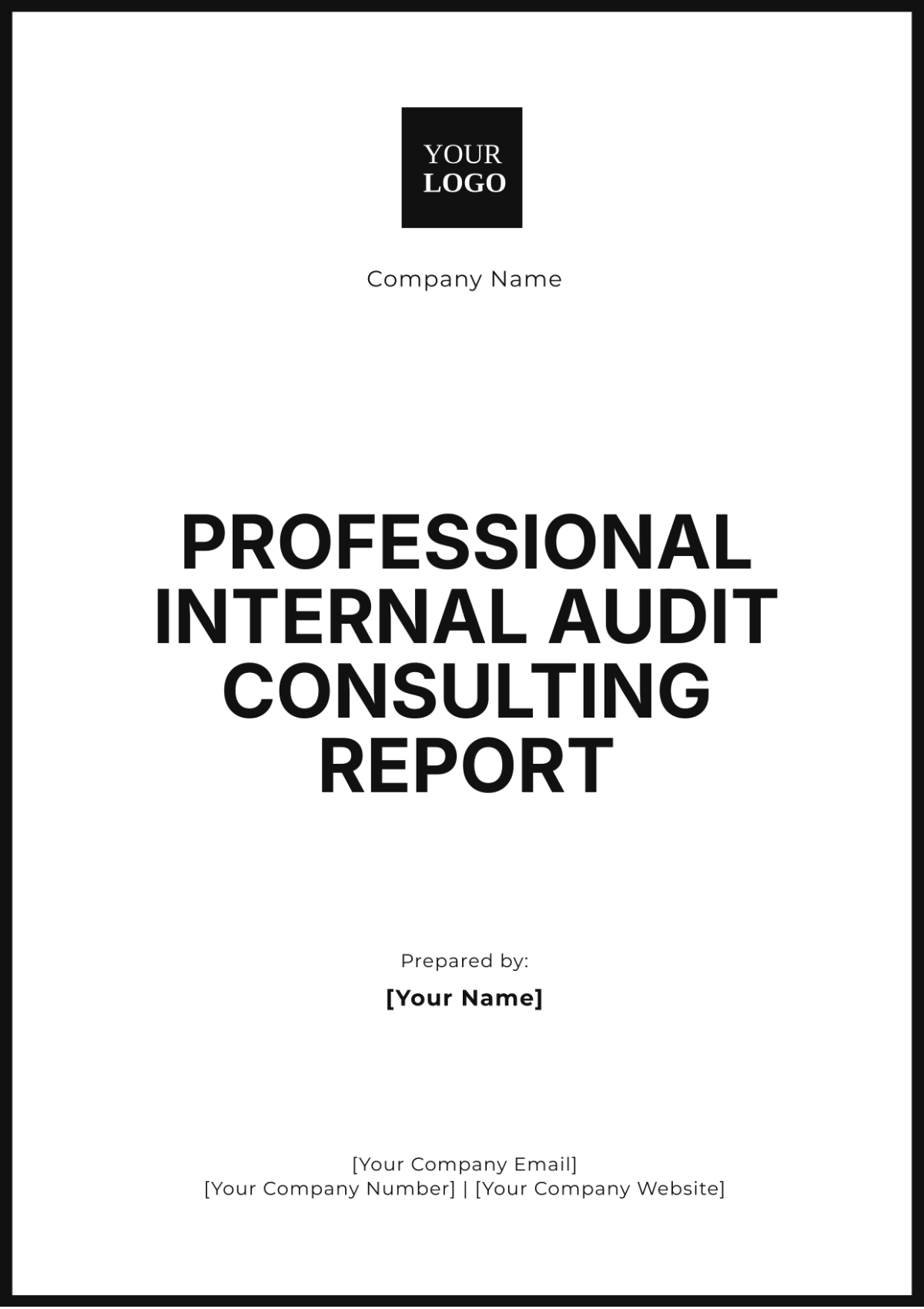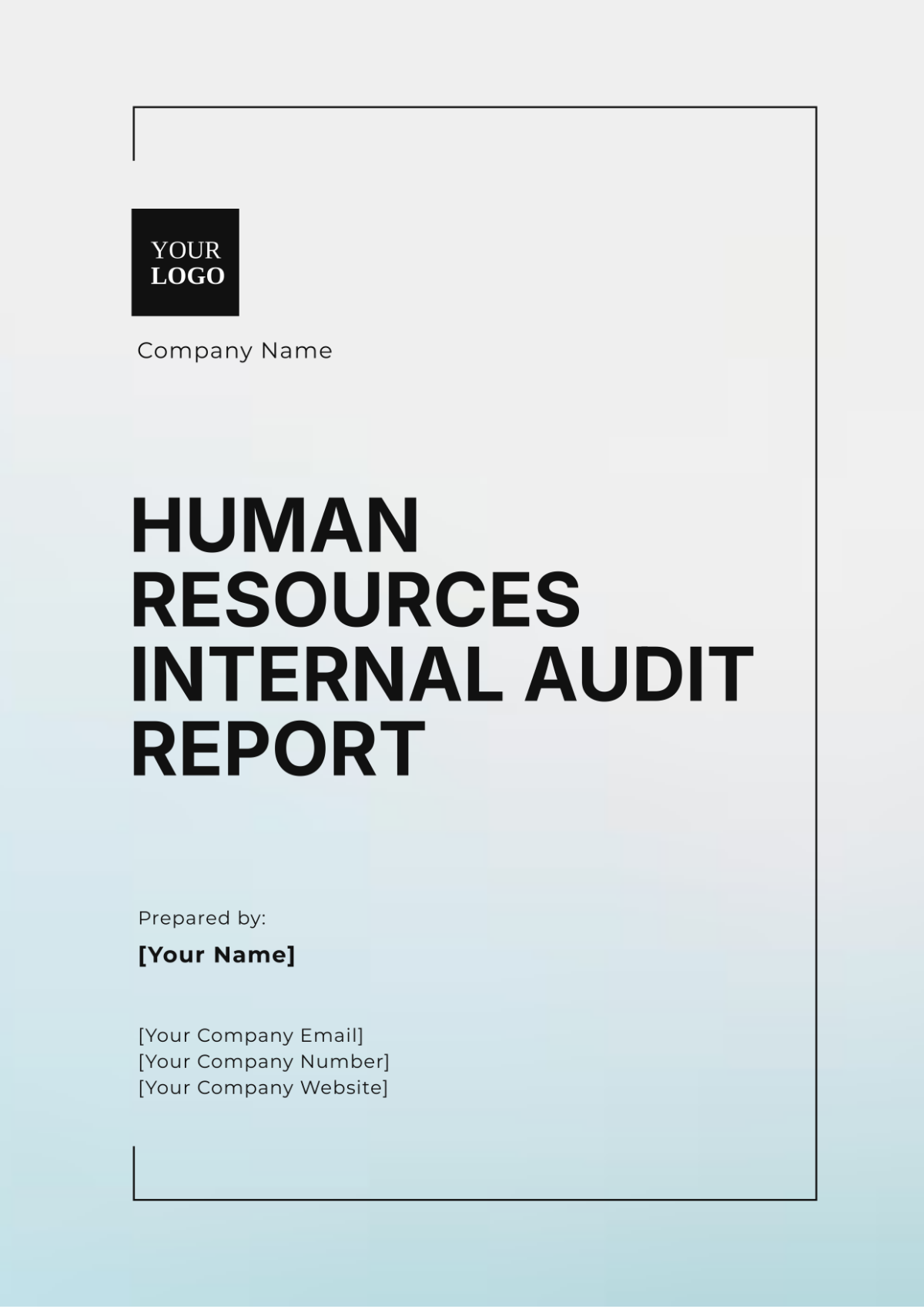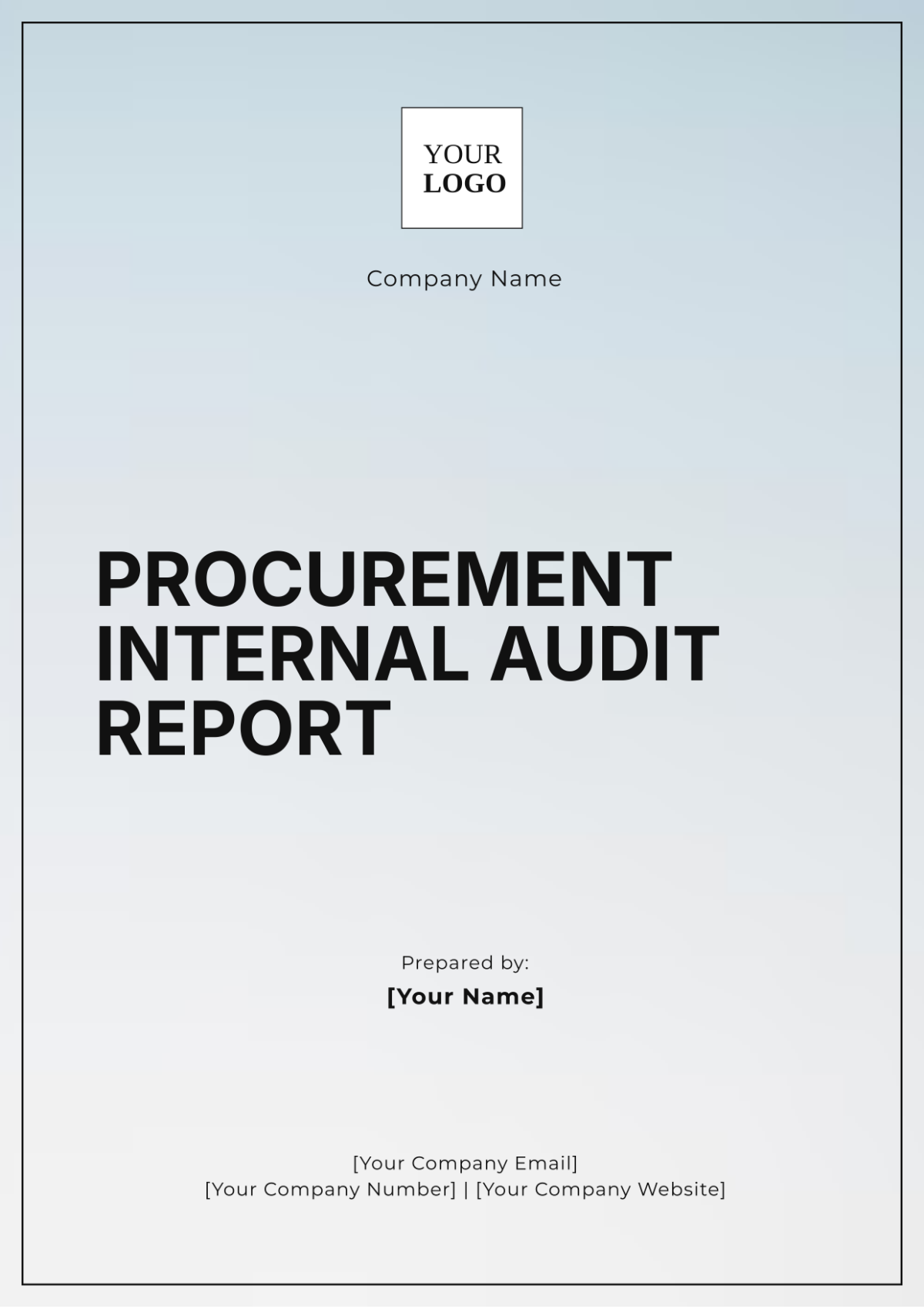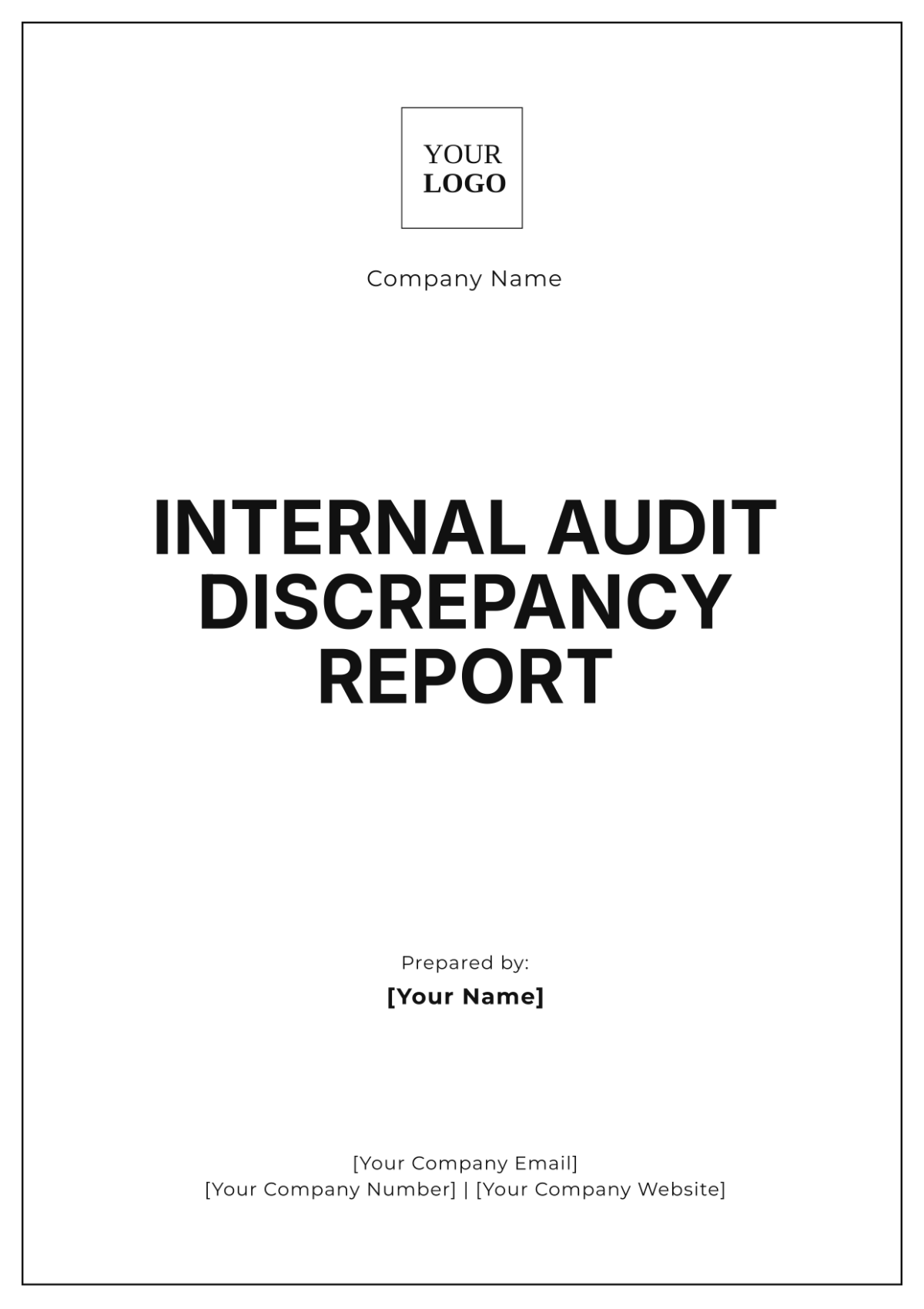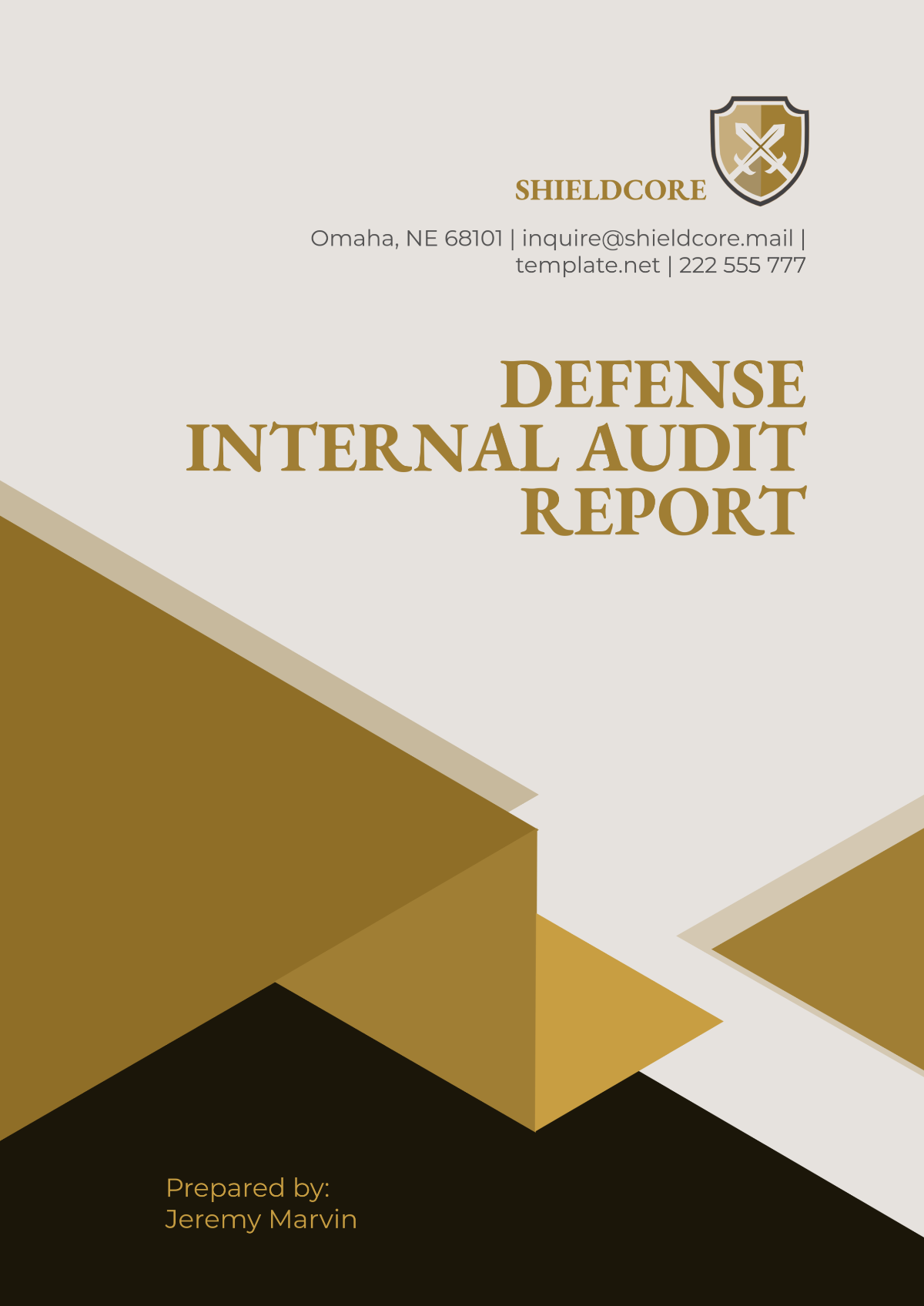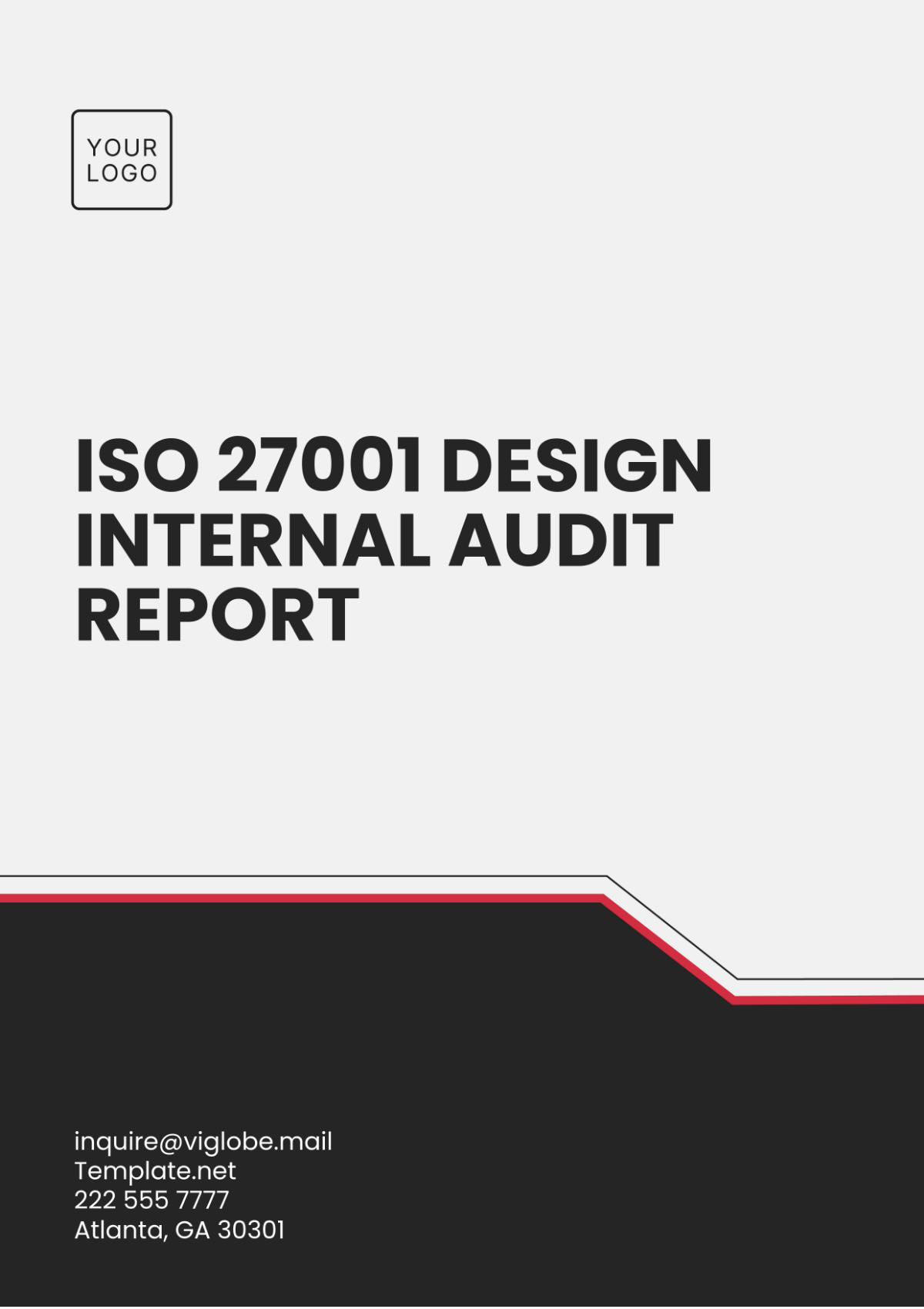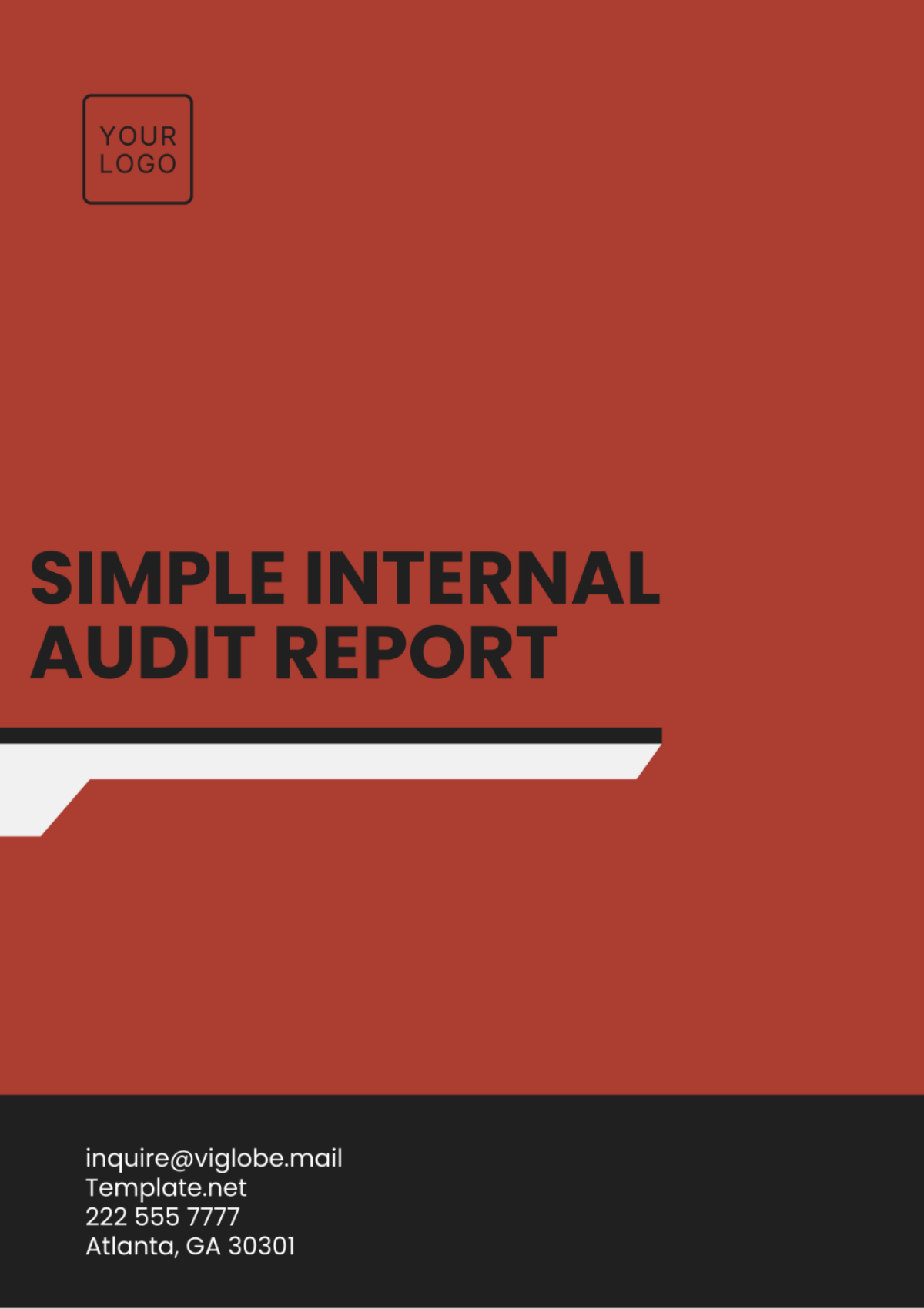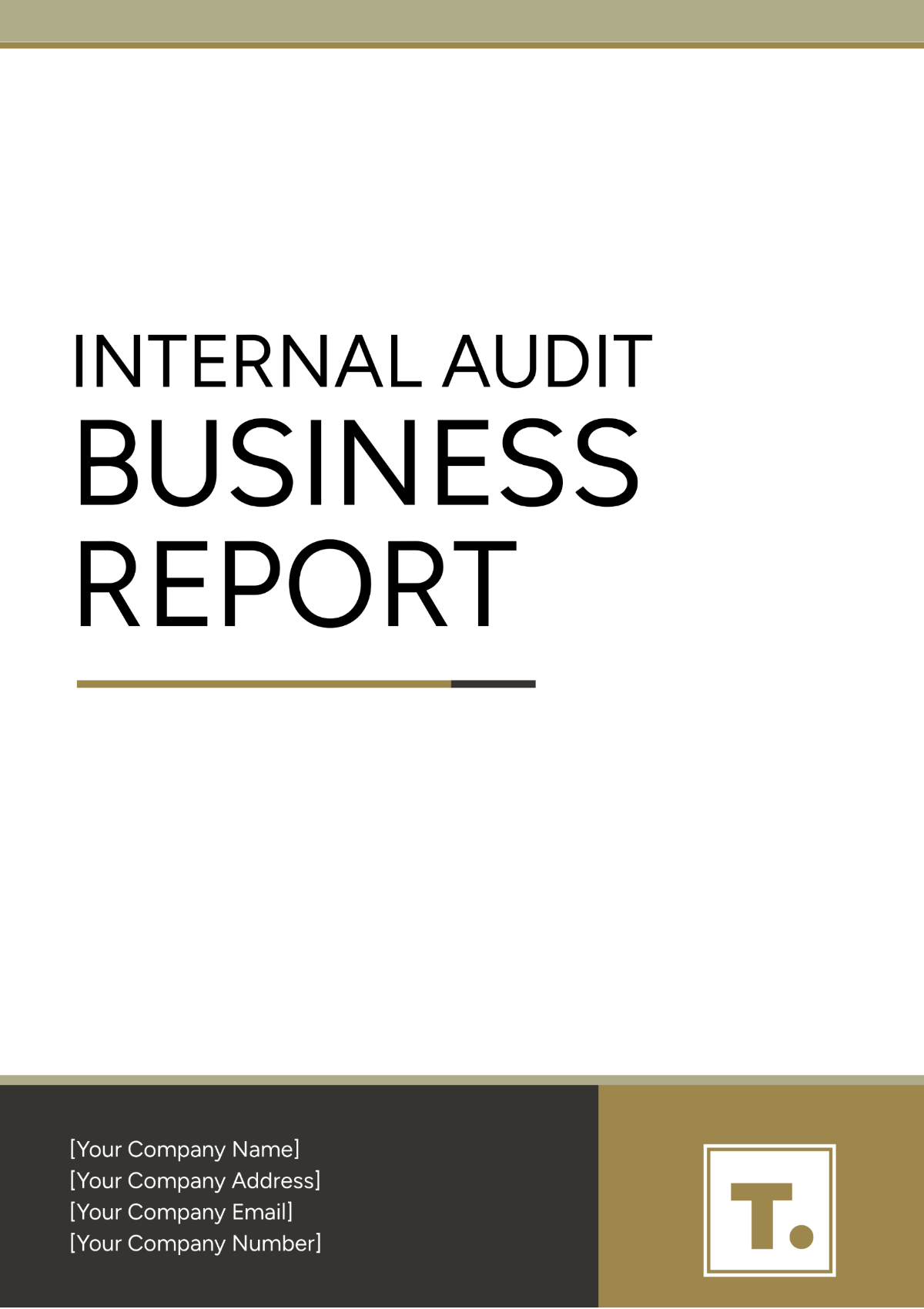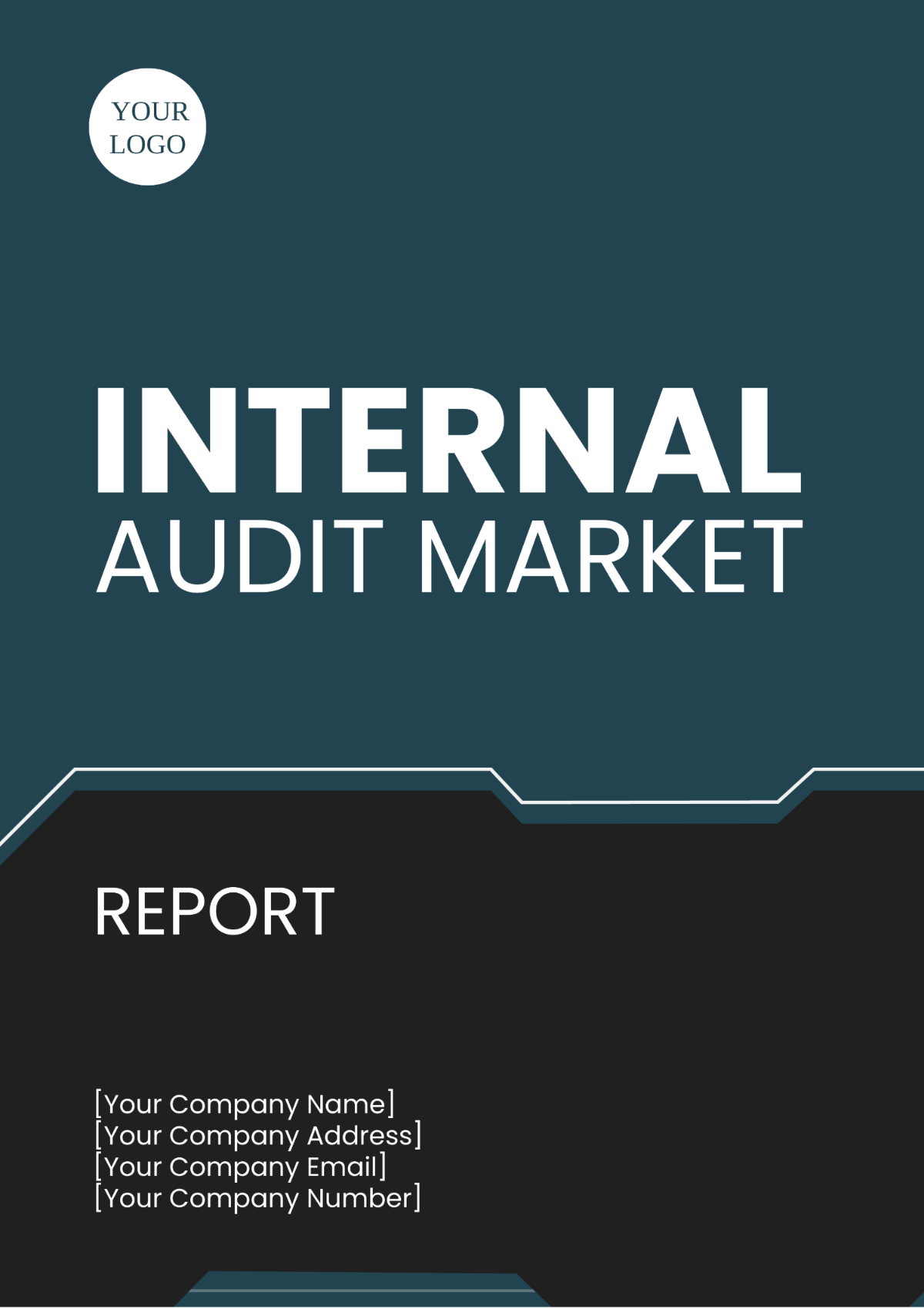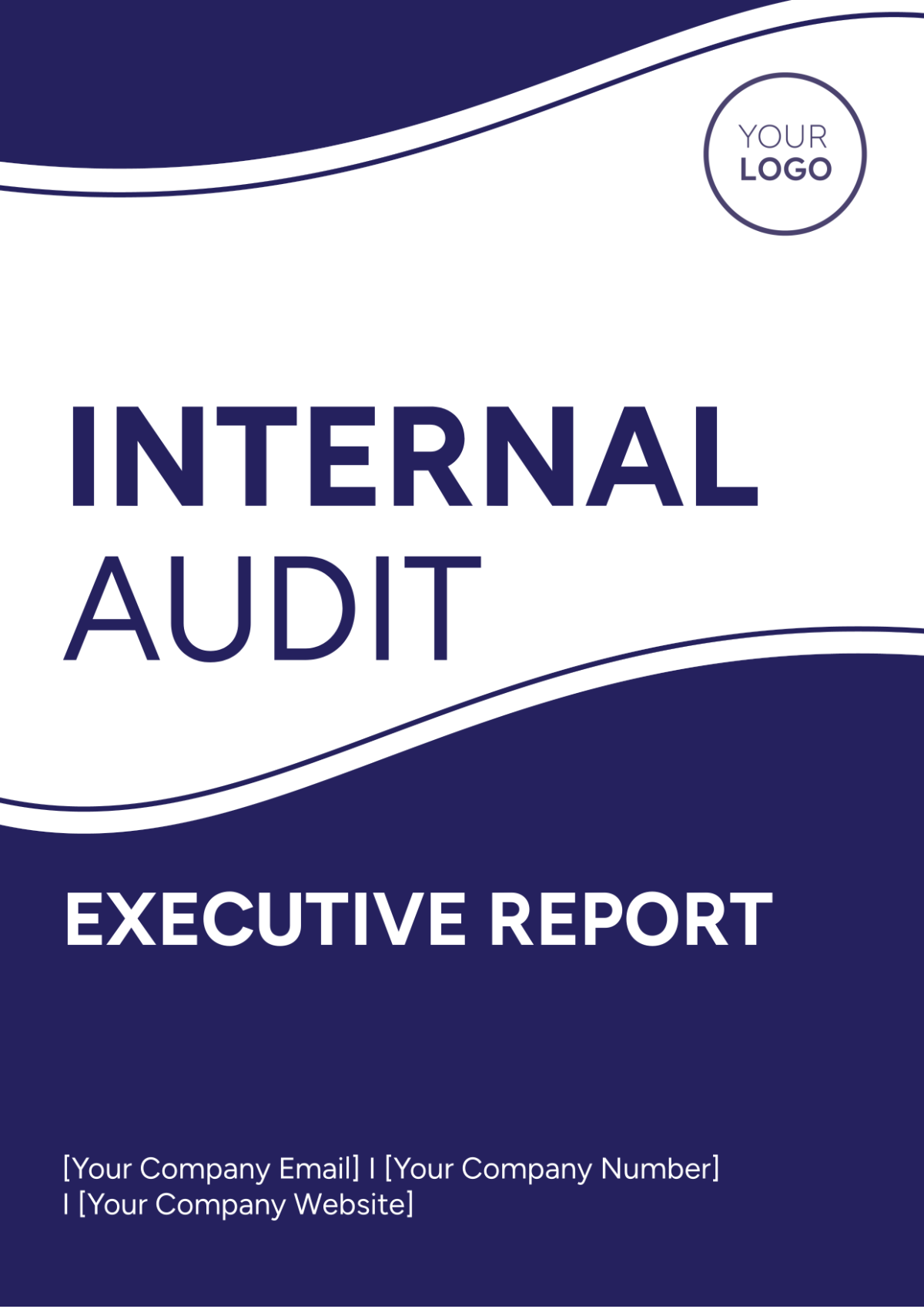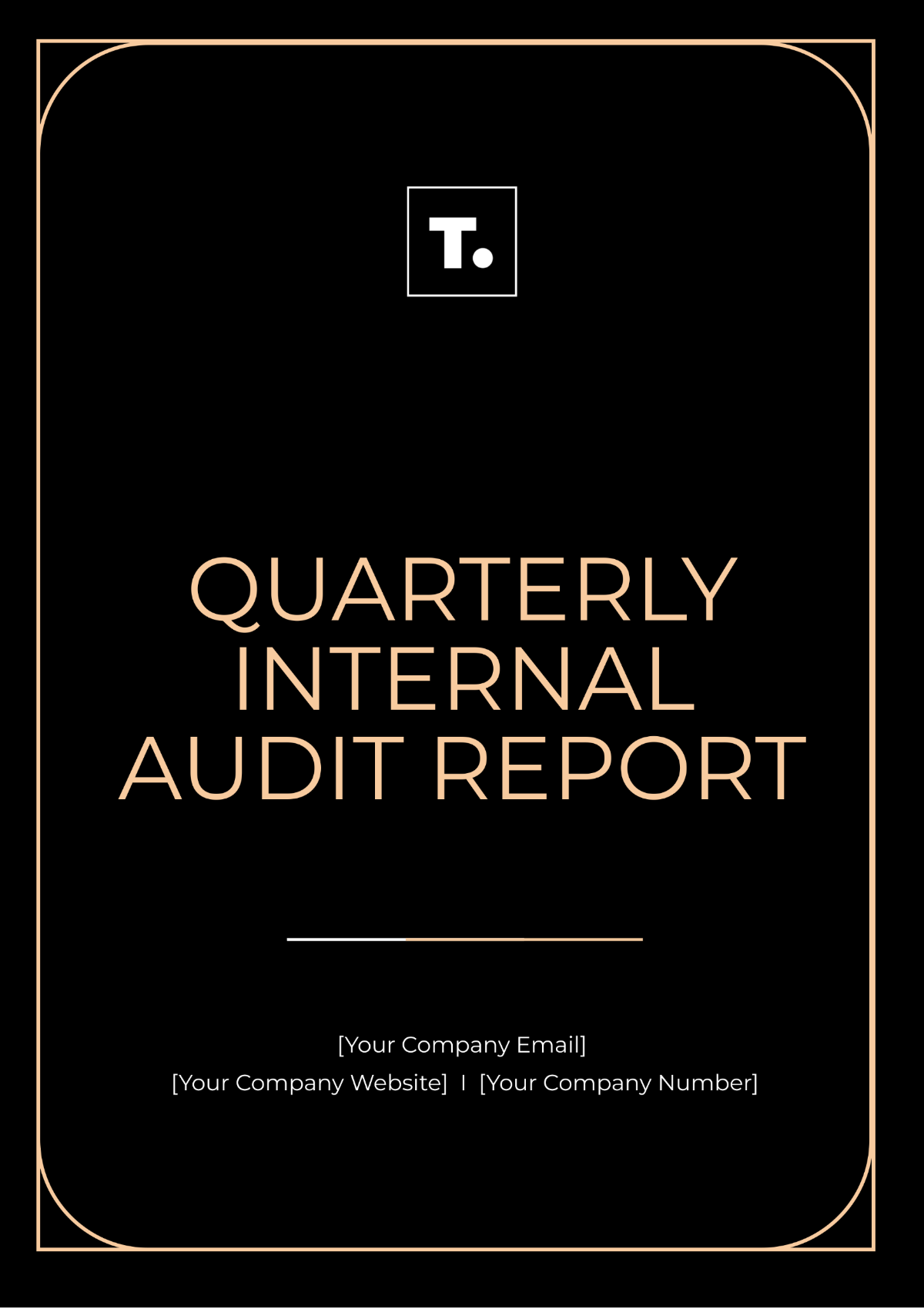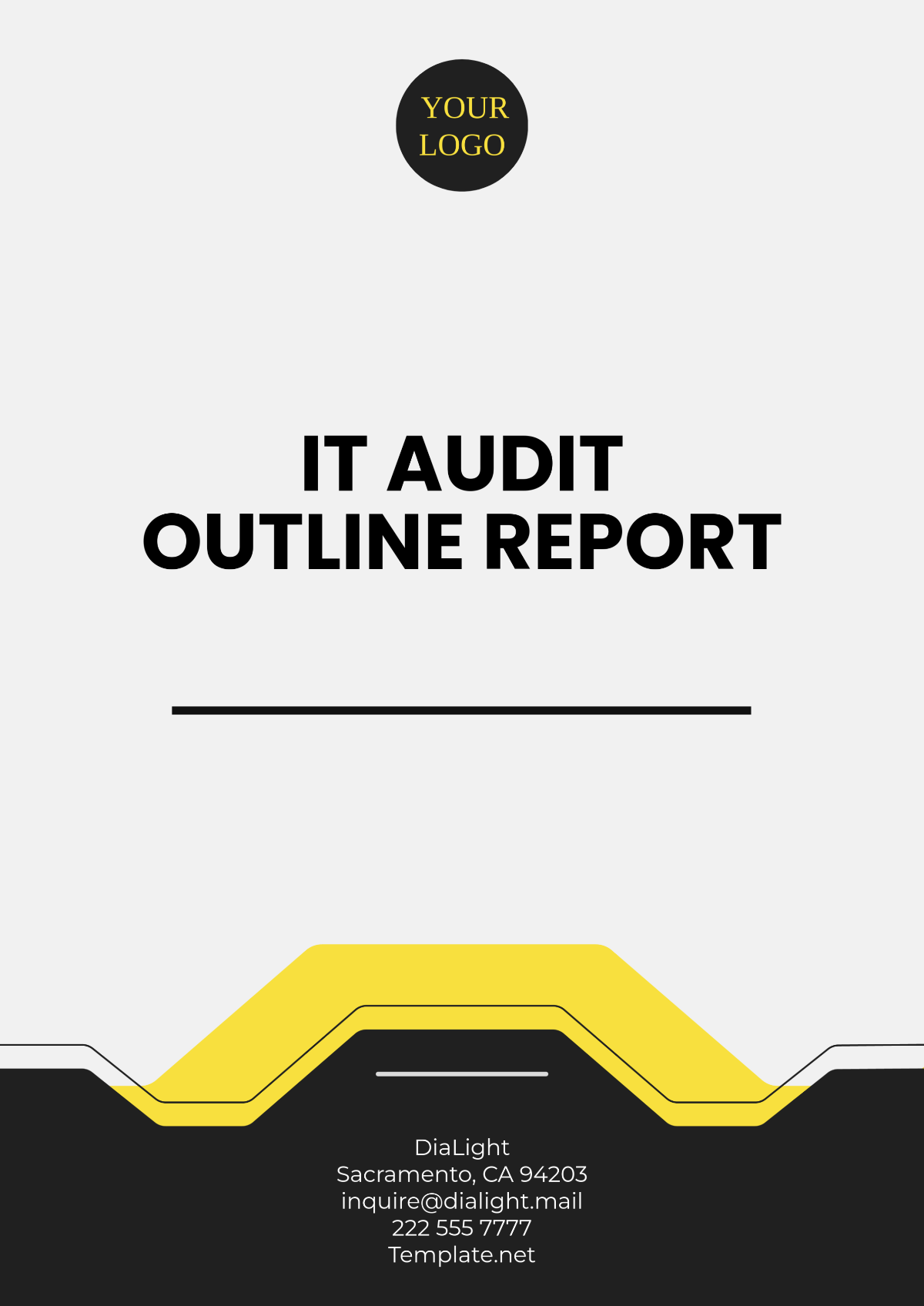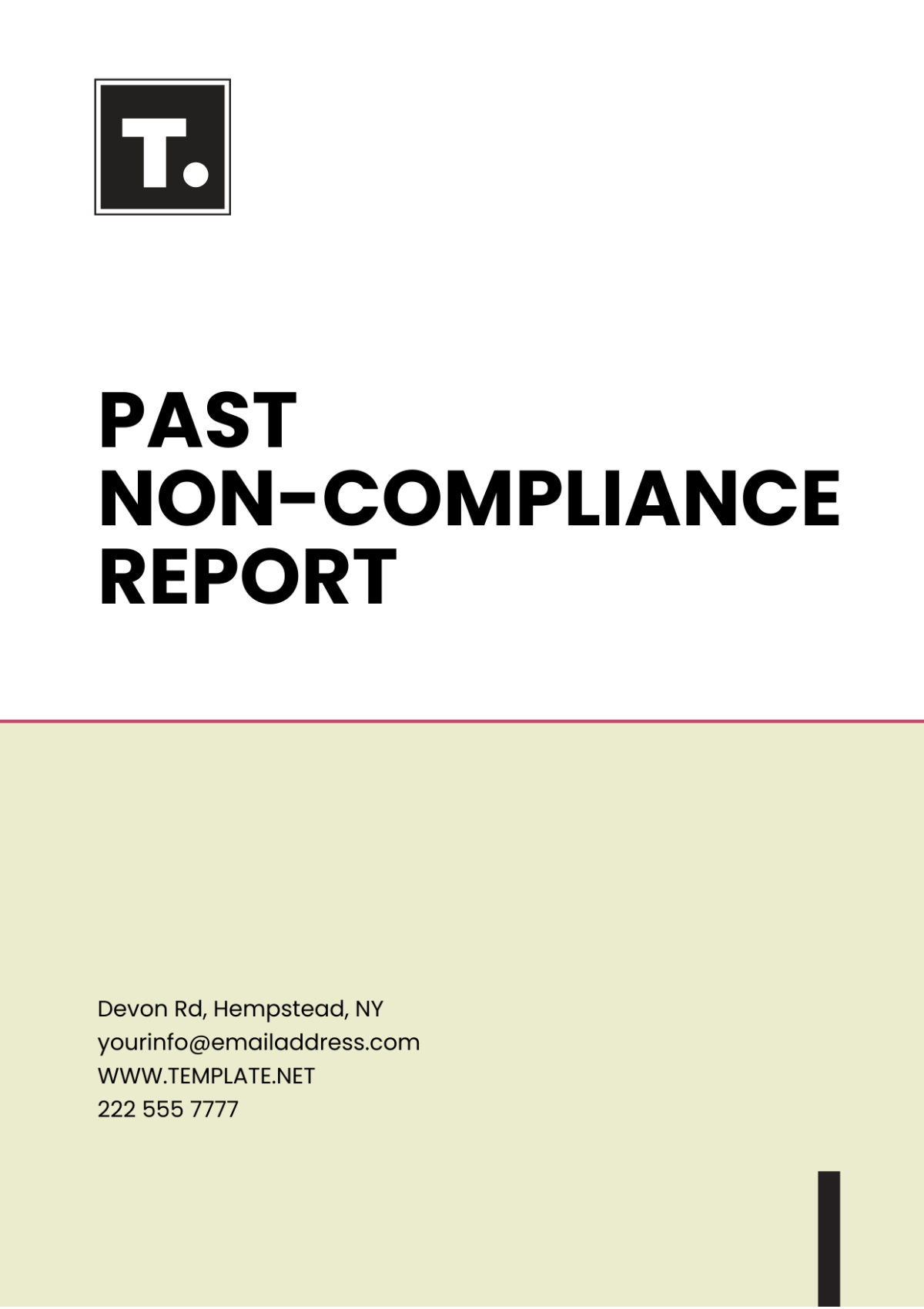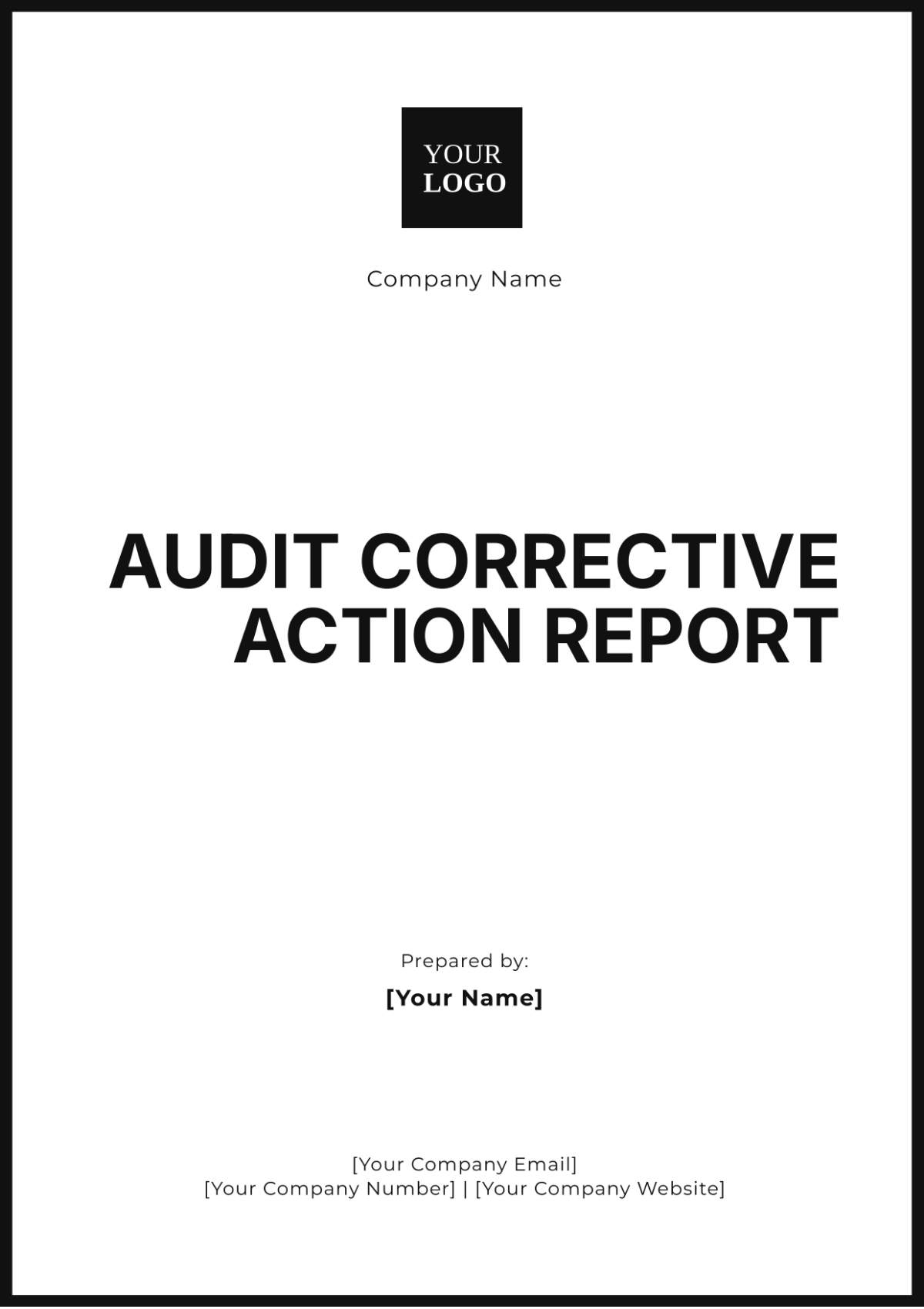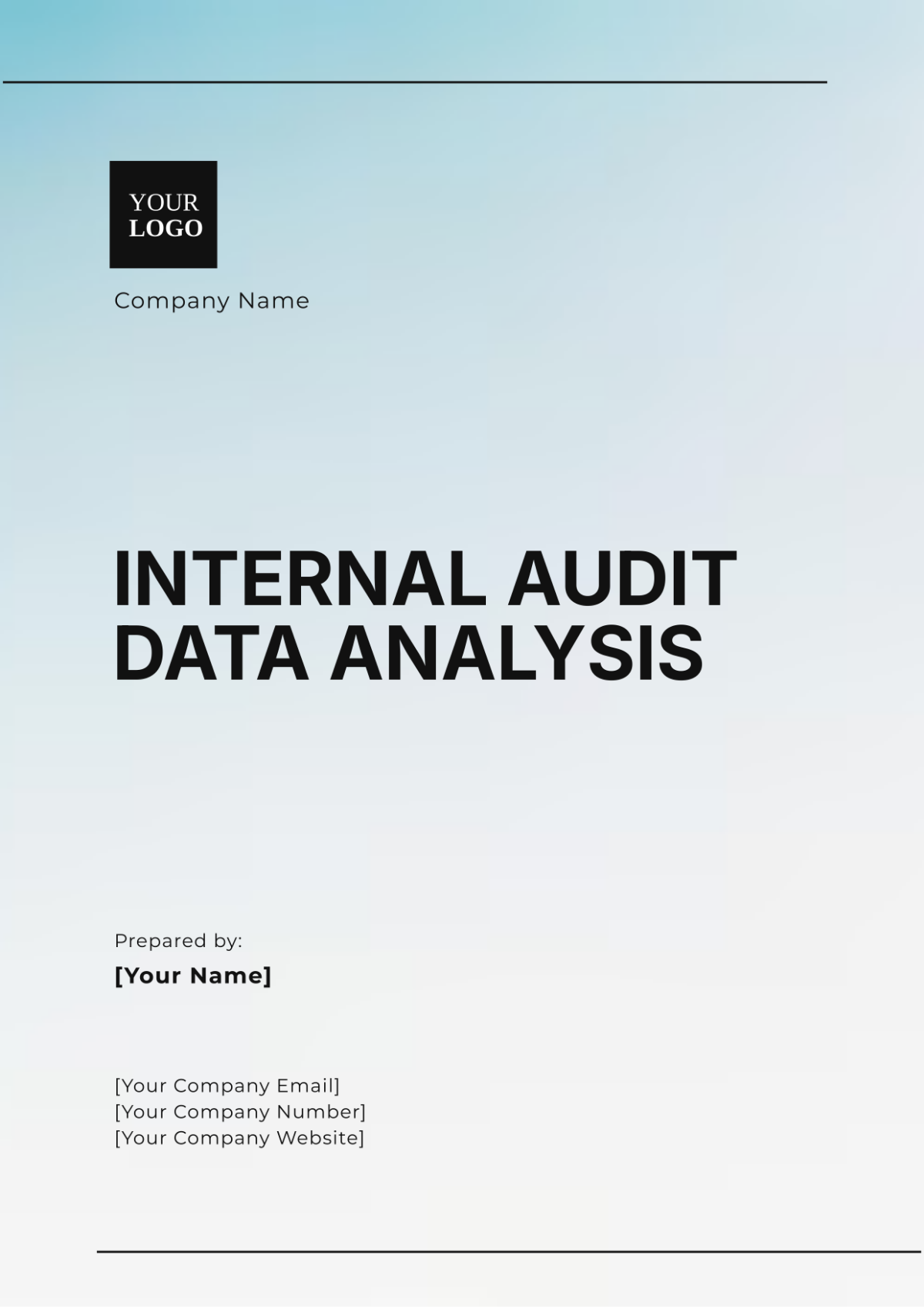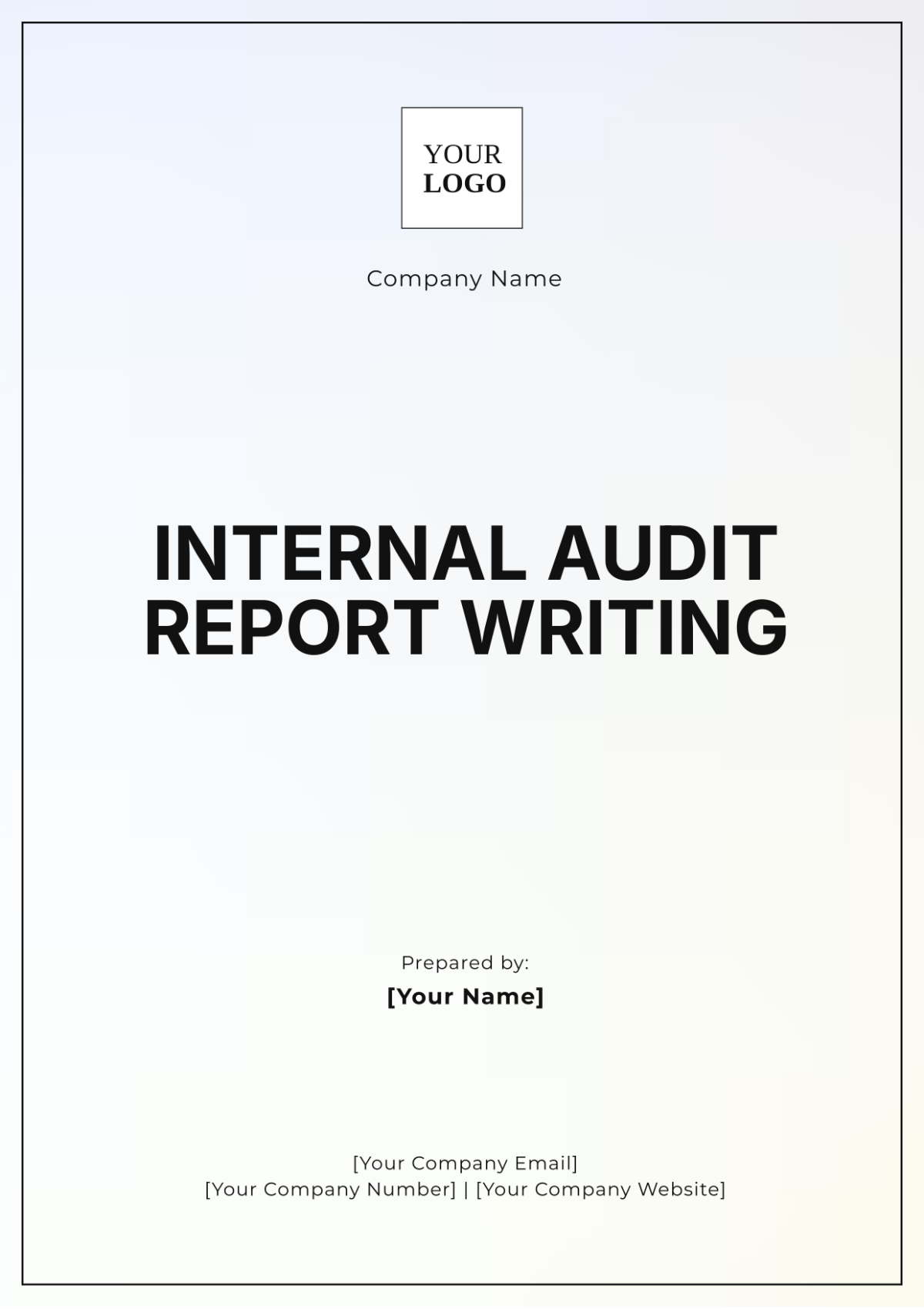Internal Audit Business Report
I. Introduction
[YOUR COMPANY NAME] conducted an internal audit to assess the effectiveness and efficiency of operational processes and controls within the organization. The audit focused on identifying areas for improvement to enhance overall performance and mitigate operational risks. This report presents the findings, recommendations, and management responses to facilitate organizational growth and compliance.
II. Audit Objectives
The objectives of this audit were:
Financial Reporting: Evaluate the adequacy of internal controls related to financial reporting, including accuracy, completeness, and timeliness.
Compliance: Assess compliance with industry regulations, company policies, and ethical standards.
Operational Efficiency: Identify opportunities for cost savings, process efficiencies, and resource optimization.
Procurement: Provide recommendations for enhancing procurement processes to ensure transparency, cost-effectiveness, and vendor management.
III. Scope
The audit covered the period from January 1, 2050, to December 31, 2050, and included detailed assessments of the following key departments and functions:
Department | Scope |
|---|---|
Finance and Accounting | Review of financial statements, transactional records, and reconciliation processes. |
Procurement | Assessment of procurement procedures, vendor selection, contract management, and compliance. |
Operations | Evaluation of production workflows, inventory management, and quality control processes. |
IV. Methodology
The audit was conducted in accordance with [YOUR COMPANY NAME]'s internal audit standards and best practices, incorporating the following methodologies:
Methodology | Description |
|---|---|
Document Review | Analysis of financial statements, transaction logs, procurement records, and operational reports. |
Interviews | Discussions with key personnel including finance managers, procurement officers, operations supervisors, and department heads. |
Testing of Controls | Evaluation of internal controls through sample testing of transactions, verification of approvals, and assessment of segregation of duties. |
Data Analysis | Utilization of data analytics tools to identify trends, anomalies, and opportunities for improvement. |
V. Findings
A. Operational Efficiency
During the audit, it was observed that the procurement process could be streamlined to reduce lead times and optimize inventory management. Recommendations are provided in Section VI.
B. Compliance
Overall, [YOUR COMPANY NAME] demonstrated satisfactory compliance with industry regulations and internal policies. However, opportunities for enhancing documentation and approval processes were identified in certain areas. Management responses are detailed in Section VII.
VI. Recommendations
Based on the findings, the following recommendations are proposed to [YOUR COMPANY NAME]:
Recommendation | Action Plan |
|---|---|
Implement a Centralized Procurement System | Initiate a project team by Q1 2051 to assess system requirements, select an appropriate vendor, and begin implementation. |
Enhance Training Programs | Develop an updated training curriculum by Q2 2051, incorporating new compliance modules and practical exercises. Conduct sessions for all relevant departments. |
Utilize Data Analytics for Decision Making | Collaborate with IT and procurement teams to identify analytics tools and establish data governance protocols by Q3 2051. Conduct pilot projects to demonstrate benefits. |
VII. Management Responses
Management has reviewed the findings and recommendations outlined in this report. Their responses are as follows:
Response to Recommendation 1: Management agrees and will initiate a project to implement a centralized procurement system by Q1 2051.
Response to Recommendation 2: Management acknowledges the need for enhanced training and will incorporate updated compliance modules into the annual training plan.
Response to Recommendation 3: Management appreciates the suggestion and will explore software solutions to automate expense approvals by Q2 2051.
VIII. Conclusion
In conclusion, the internal audit conducted by [YOUR COMPANY NAME] has identified significant opportunities for enhancing operational efficiency, strengthening compliance, and leveraging technology to drive strategic growth. By implementing the recommendations outlined in this report, [YOUR COMPANY NAME] will position itself for sustainable success in a competitive marketplace while maintaining high standards of corporate governance and regulatory compliance.
